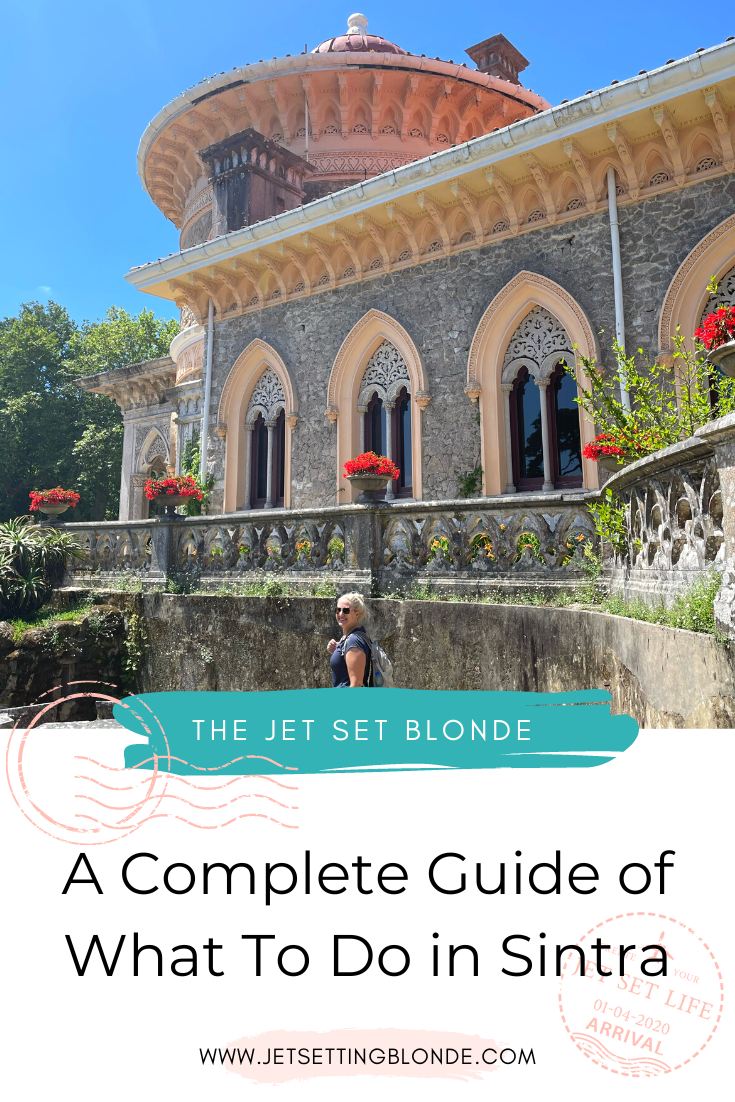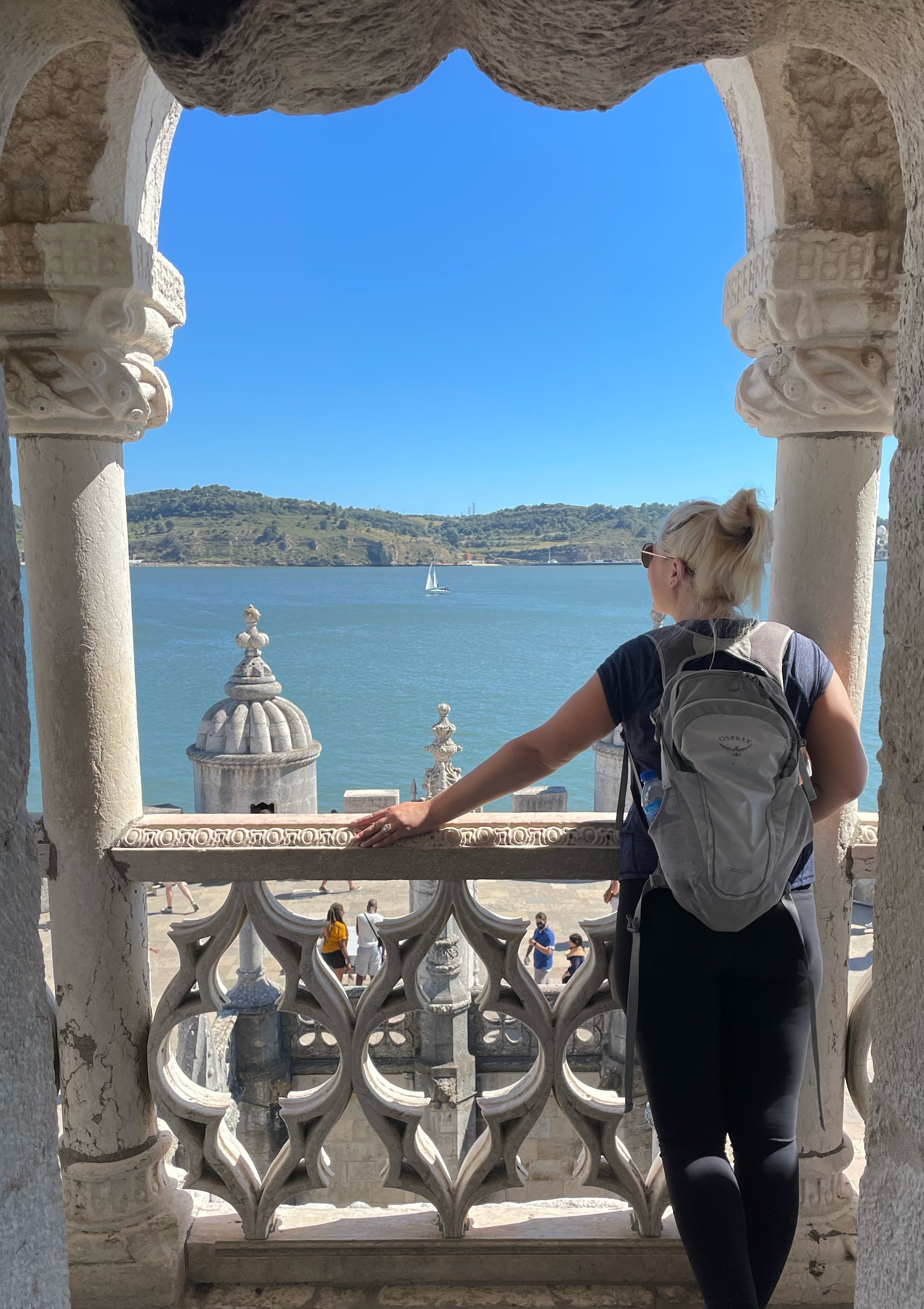Disclaimer: This post contains affiliate links, which means that the blog may earn a commission if you click through and make a purchase. This is at no additional cost to you. I only recommend products or services that I believe will add value to my readers. Thank you for your support!
Sintra is a charming fairy tale city located outside of Lisbon, Portugal. Once a sanctuary for royals, Sintra is a cool hilly town full of majestic palatial residences, sweeping views, and scenic pine forest escapes. If you’re wondering what to do in Sintra, you’ve come to the right place. Here’s the complete guide of what to do in Sintra, whether you’re doing a day trip from Lisbon or extended stay.































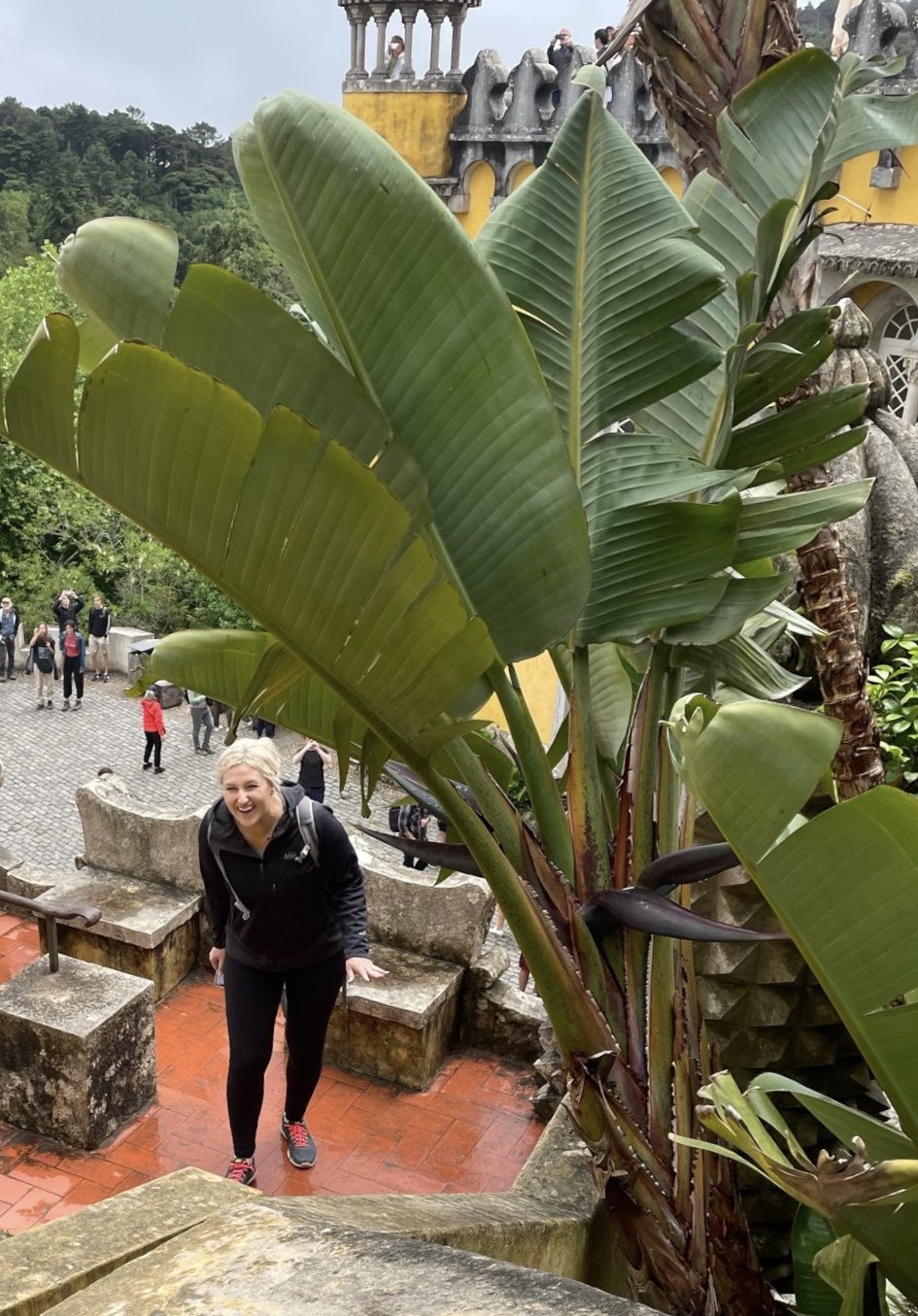
1. Travel up one of Sintra’s highest peaks to see Pena Palace (Palacio Nacional da Pena).
Pena Palace was once a chapel built in the 12th century. A monastery followed at the order of King Manuel I. It became Pena Palace in the 19th century after King Ferdinand II acquired the land and sought to build a summer residence for his family. The last royal resident of the Palace was Queen Amelie of Orleans. The interior of Pena Palace has been restored to reflect the décor of her time in the palace - circa 1910 - the time in which Portuguese nobility fled to Brazil during a revolution.
Because this is arguably the most popular site to visit in Sintra, be prepared for large crowds, especially in the spring and summer months. Try to visit as early or late in the day as possible. Avoid 10:30 a.m. to 3:00 p.m. when coach tours arrive. It’s a steep hike up to Pena Palace, so bus, tuk tuk, or car is recommended; you can always walk down the mountain for a less strenuous outdoor activity. Opt for the Palace and Park ticket - I enjoyed the Park even more than the Palace, so it’s worth the extra money.








2. Find peace and tranquility in Pena Palace Park (Parque de Pena).
When King Ferdinand II built Pena Palace, he also created the Park which spreads across 200 hectares. The Park is filled with imported trees and plants from around the world. There are several highlights within the park worth a visit if you have the time.
- Cruz Alta - a stone cross that sits on the highest peak of the park, 529 meters above sea level; it offers one of the best panoramic views of the Sintra countryside and of Pena Palace.
- Vale dos Lagos e Pateira (Valley of the Lakes)- a haven for birds with bridges, grottos, ponds, and mini waterfalls
- Chalet of the Countess of Edla (aka. House of Indulgence) - a small Alpine-inspired cottage built between 1864 - 1869 for King Ferdinand II’s second wife and opera singer, Elise Hensler
3. Taste Ginja liqueur, a symbol of Portuguese culture.
While you’re in Sintra (or really anywhere in Portugal), you must try their Ginja. It’s a Portuguese liqueur made by infusing ginja berries (sour cherries) in alcohol with sugar, cloves, and/or cinnamon.
There’s not one particular place you have to try them at - there are little random Ginja stands that you can find in Sintra. Just walk up to one and ask for a Ginja shot. You can try it in a milk chocolate or white chocolate shot glass.
It’s a fun thing to try in Portugal - I liked the taste but also found it a bit medicinal like some sort of cherry cough medicine from my childhood. I would definitely try it again but wouldn’t want a whole lot of it. It makes for a great souvenir!



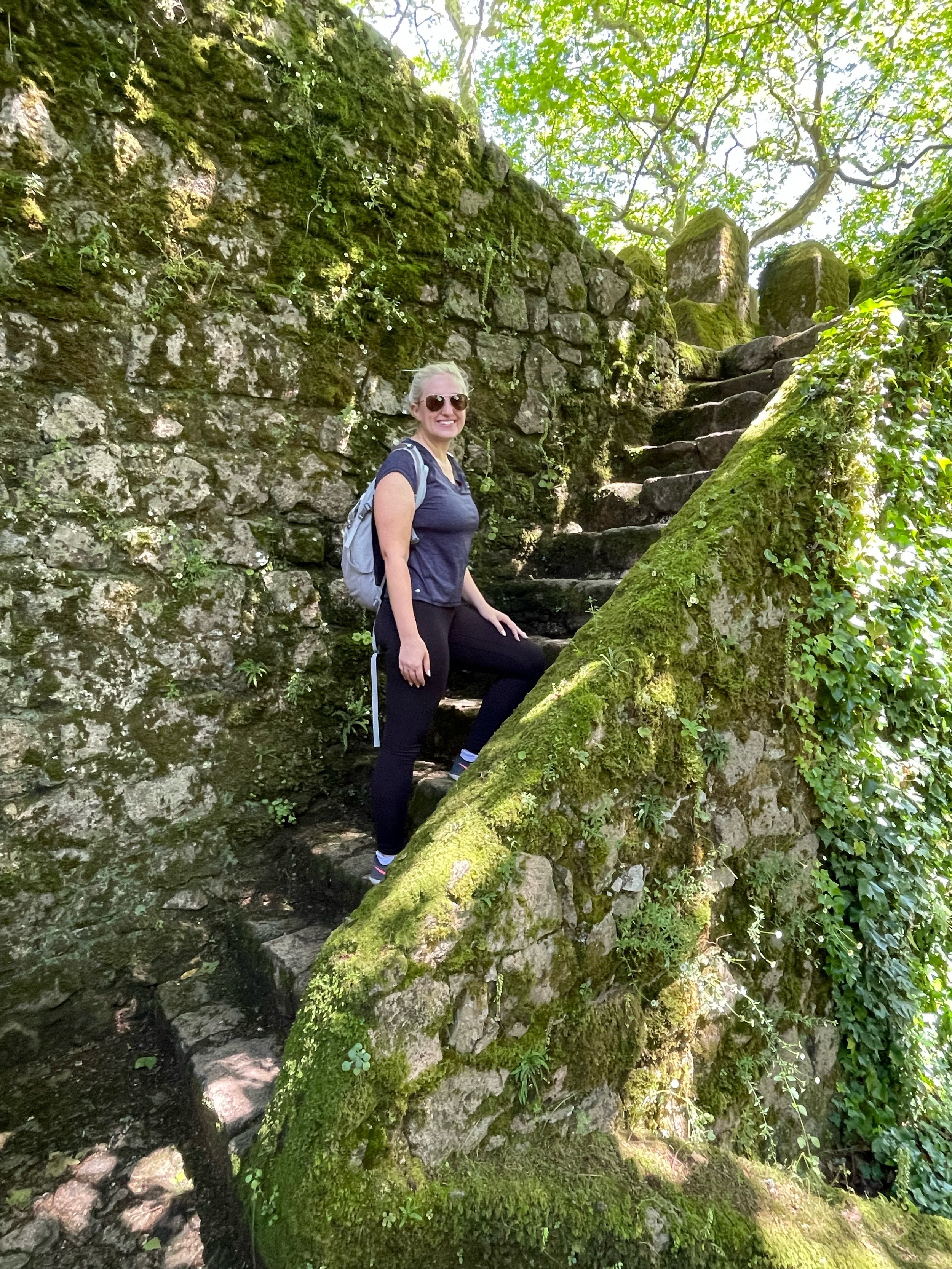






4. Take in sweeping views of Sintra from the Castle of the Moors (Castelo dos Mouros).
King Ferdinand II partially restored the Castle making it a “showpiece” for his newly constructed Pen Palace.
Today, you can climb up the defensive towers of the Castle of the Moors, peer through mossy battlements, and witness spectacular views of Sintra and Pena Palace.


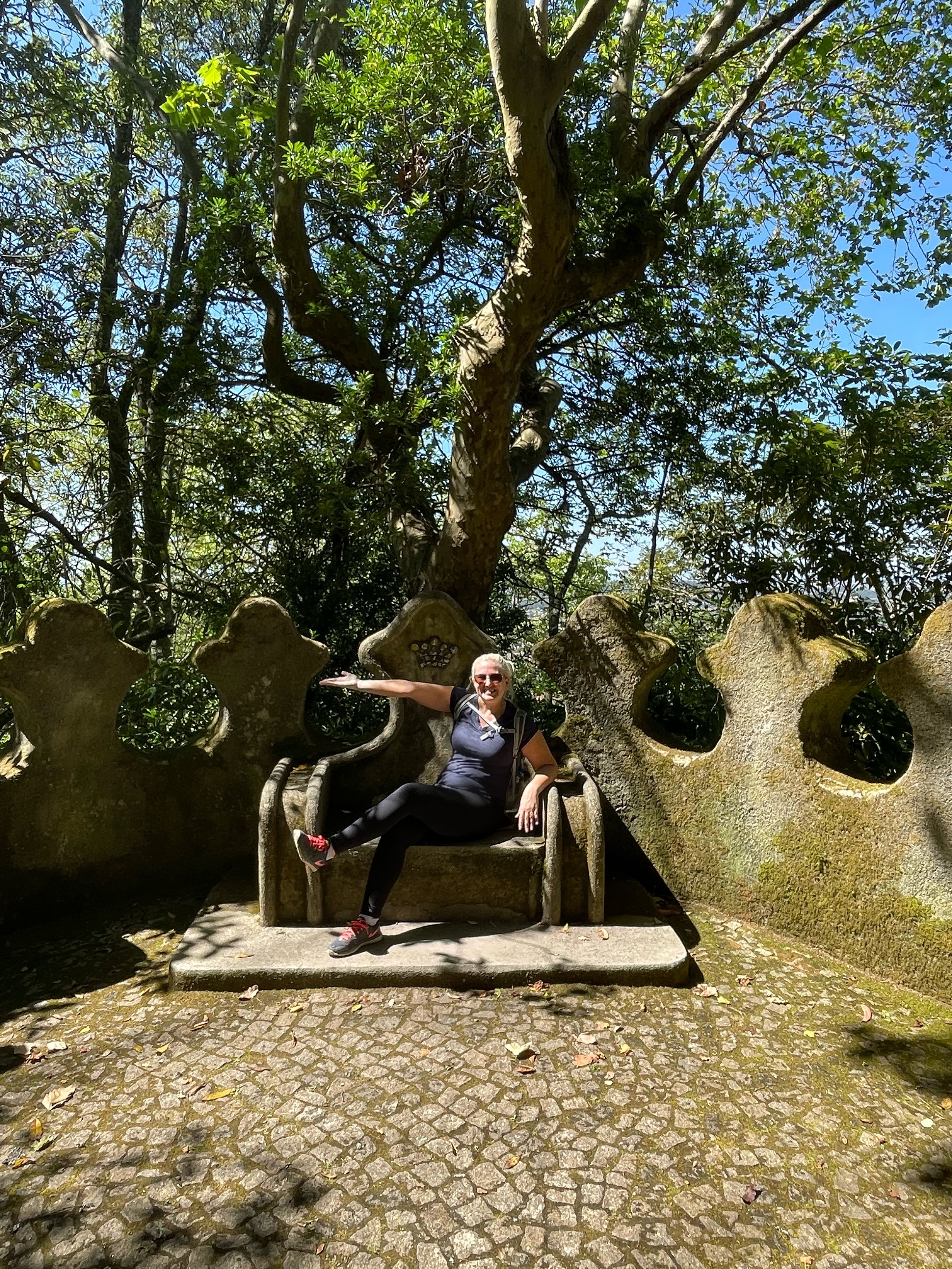

5. Stop by Villa Sassetti, the most beautiful and least known residences in Sintra.
Though you cannot enter, you can admire the Romanesque Lombardy architecture style of the villa that creates a uniquely Mediterranean aesthetic. Around the villa lies a majestic garden that totals to 1.2 hectares. Construction of this villa started in 1890 with Victor Carlos Sassetti as the original owner.
6. Ride through the winding roads of Sintra in a tuk tuk.
Though Sintra is a walkable town, you may want to ride in a tuk tuk to get up the mountain or to cross the city. Not only was the tuk tuk really fun to ride in, but it was also very helpful to be in a compact vehicle. It’s likely more expensive than a taxi, however taxis were not as easy to spot (unless you were at the train station) and Uber was terribly unreliable.
On our way up to Castelo dos Mueors, there was a large accident where a car flipped and blocked the road up the mountain. Thankfully, no one was hurt. Because we were in a tuk tuk, we were able to slip around the wreck and continue to our destination, however anyone in a tour bus or in a car was unable to carry out their plans for the day.



7. Savor Sintra’s sweet treats at Casa Piriquita.
Queijadas and travesseiros are most famously made in Sintra. A queijada is a small sweet using cheese, eggs, milk, and powdered sugar. A travesseiro is a crispy treat combining puff pastry and cream made from almonds and egg yolks. Travesseiro translates to pillow or cushion.

















8. Discover the mystery and lore behind Quinta de Regaleira and its Initiation Well.
Though first owned by the Viscountess of Regaleira, Quinta de Regaleira became the 4-hectare estate it is today after Carvhalho Monteiro bought the property in 1892. With the help of Italian architect, Luigi Manini, Monteiro added architectural features that related to alchemy, Masonry, the Knights Templar, and Rosicruicians. Much of the construction was completed in 1910 and reflects a blend of influences from Roman, Gothic, Renaissance, and Manueline styles.











9. Eat like royalty at Seteais Restaurant.
Along with your cocktail (which are some of the most beautiful drinks I’ve ever seen), you can enjoy small dishes of nuts, chips, and salty snacks. It’s an utterly blissful way to begin your “royal” meal.
When your reservation is ready, you can either stay on the terrace or come inside for dinner. I chose to go inside to experience another area of the palace. You can choose from a tasting menu or order a la carte. The meals are prepared and displayed beautifully as they come out. It really is a special experience to dine by candlelight in a palace with fresco walls and luxurious tapestries.
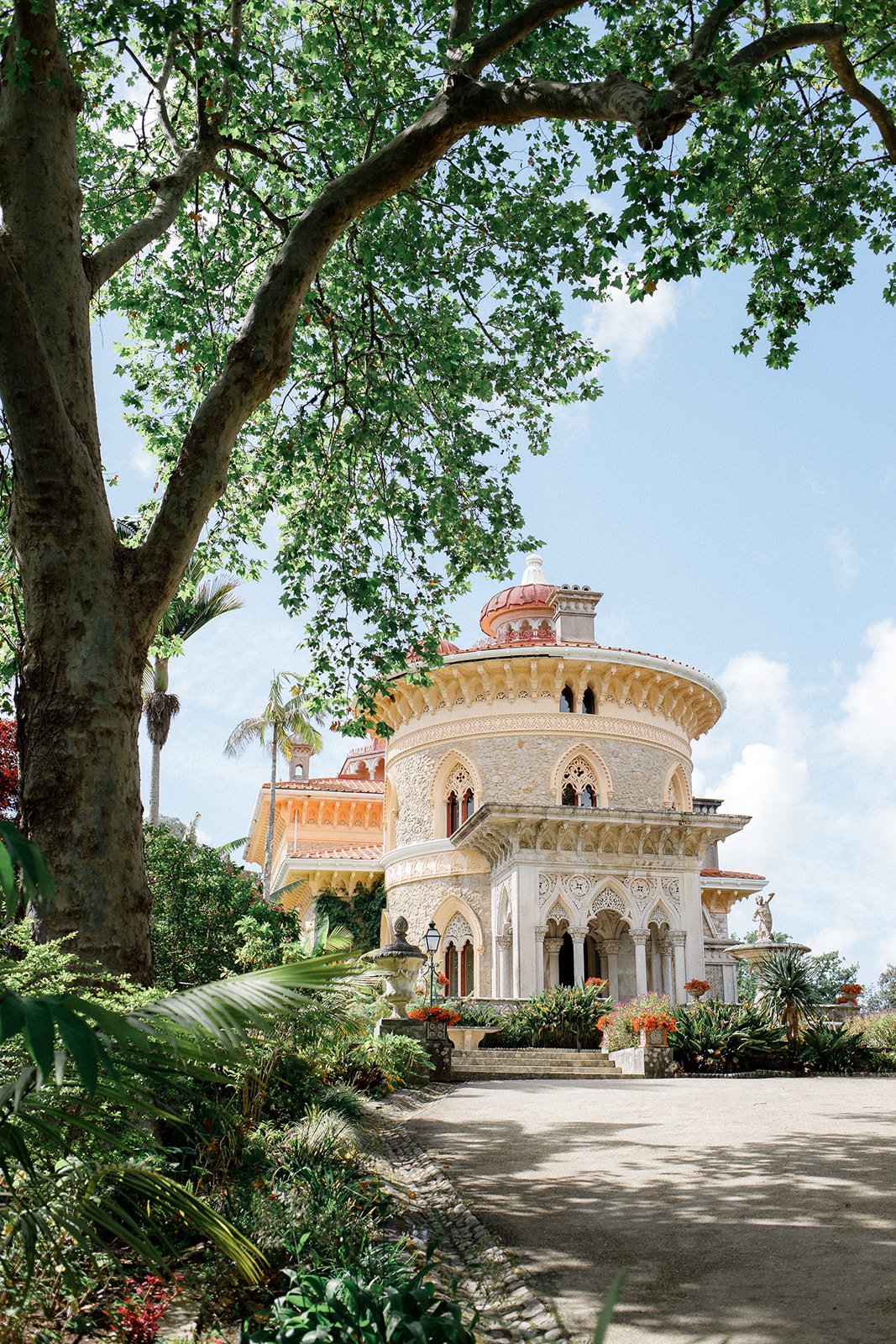
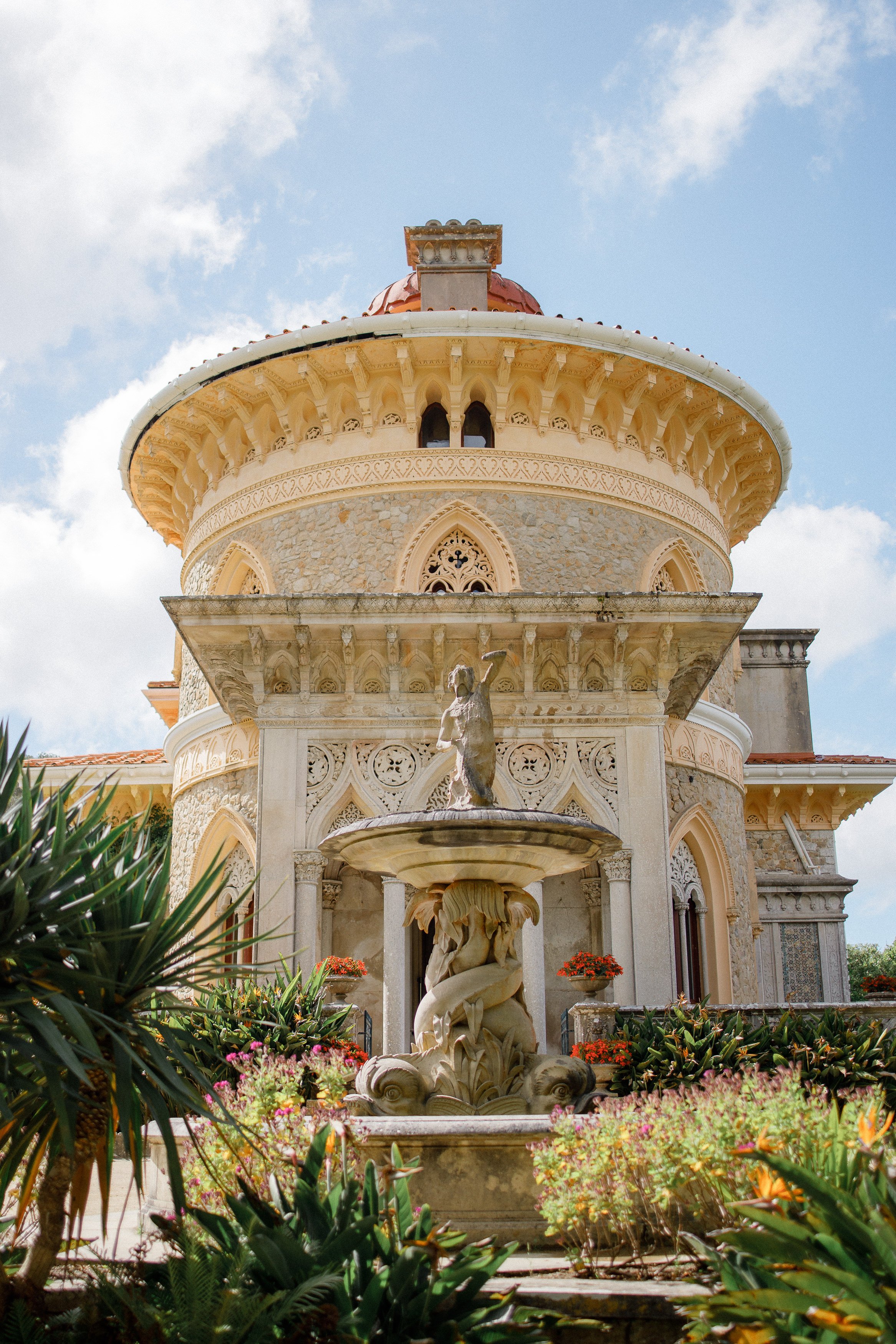
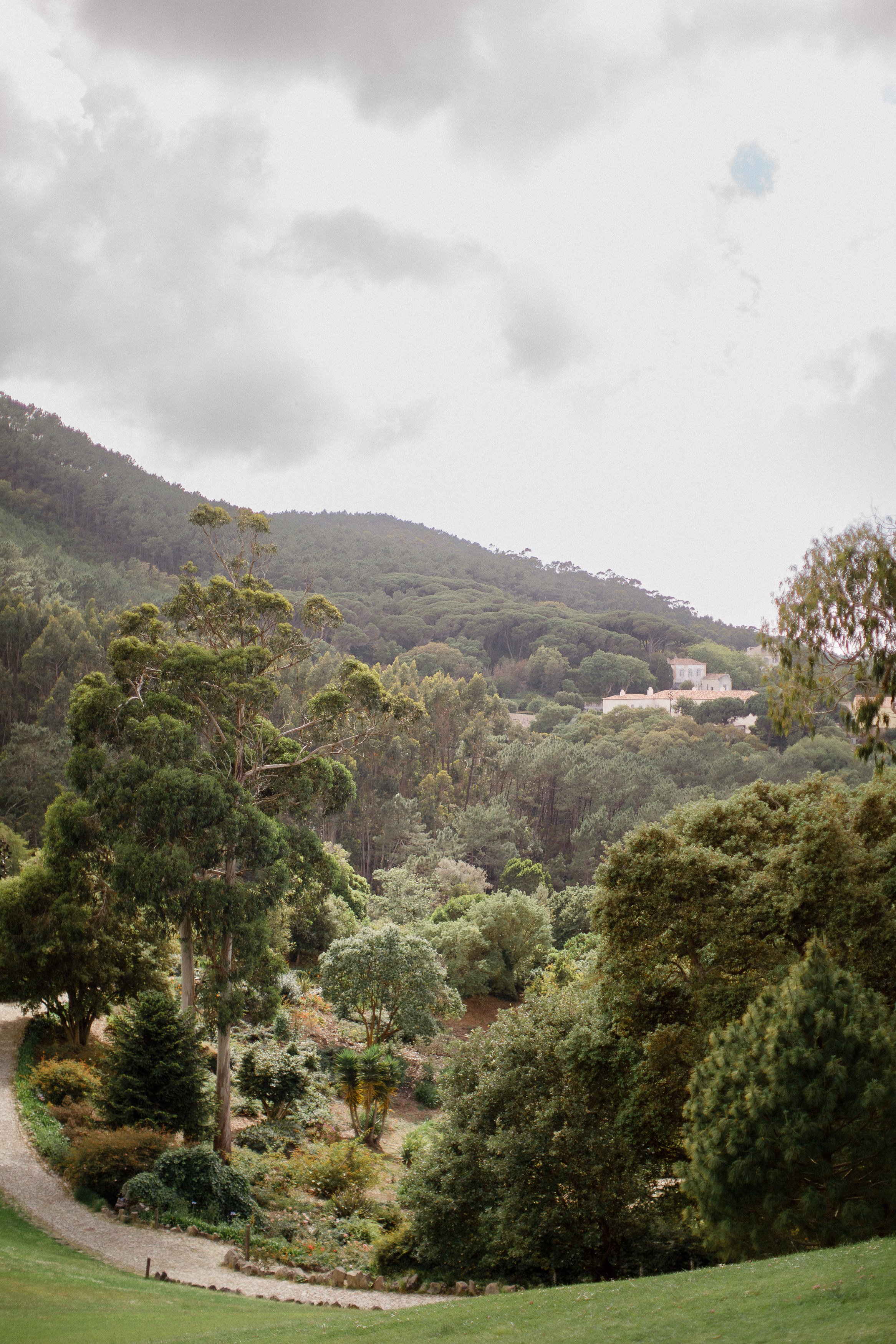

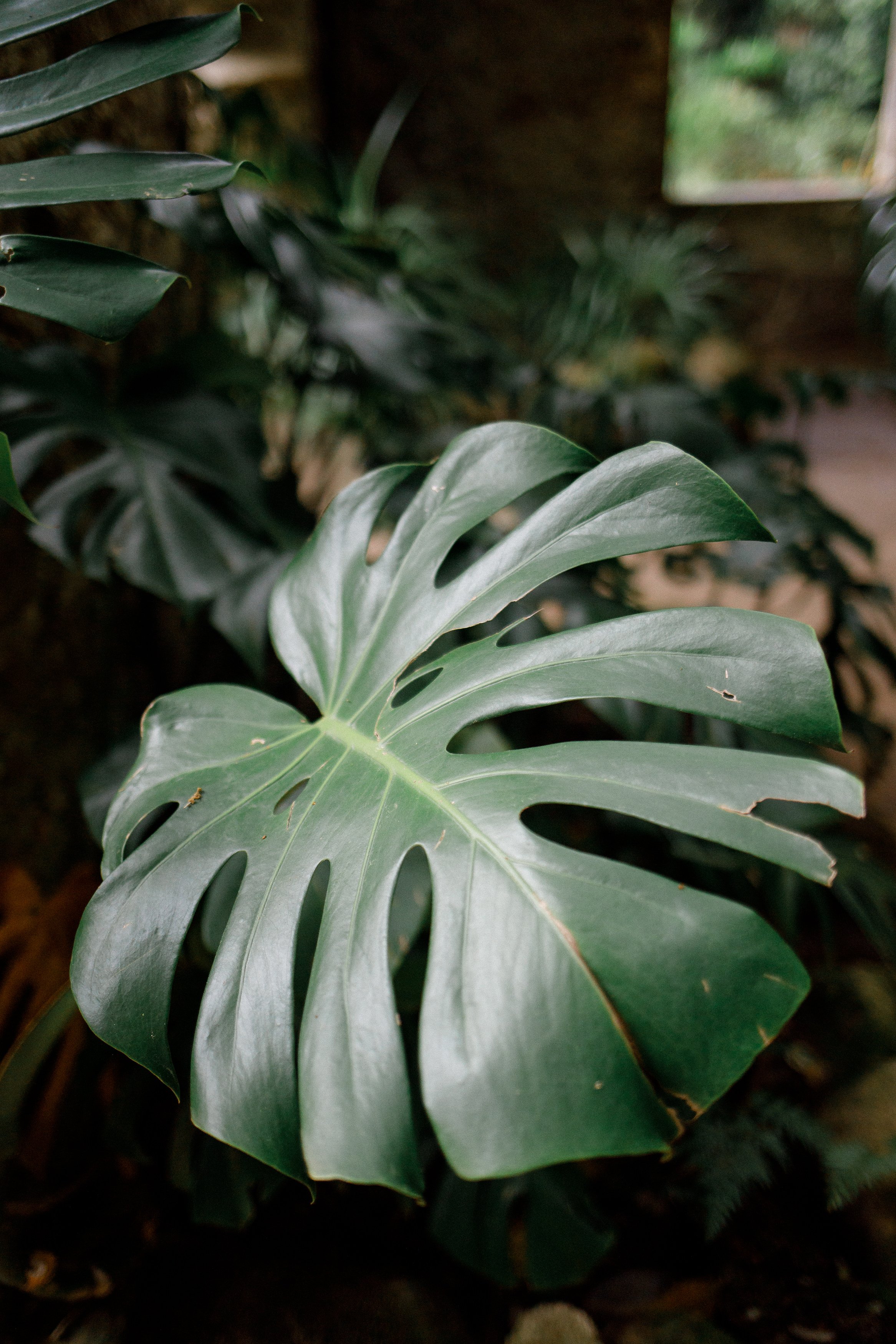
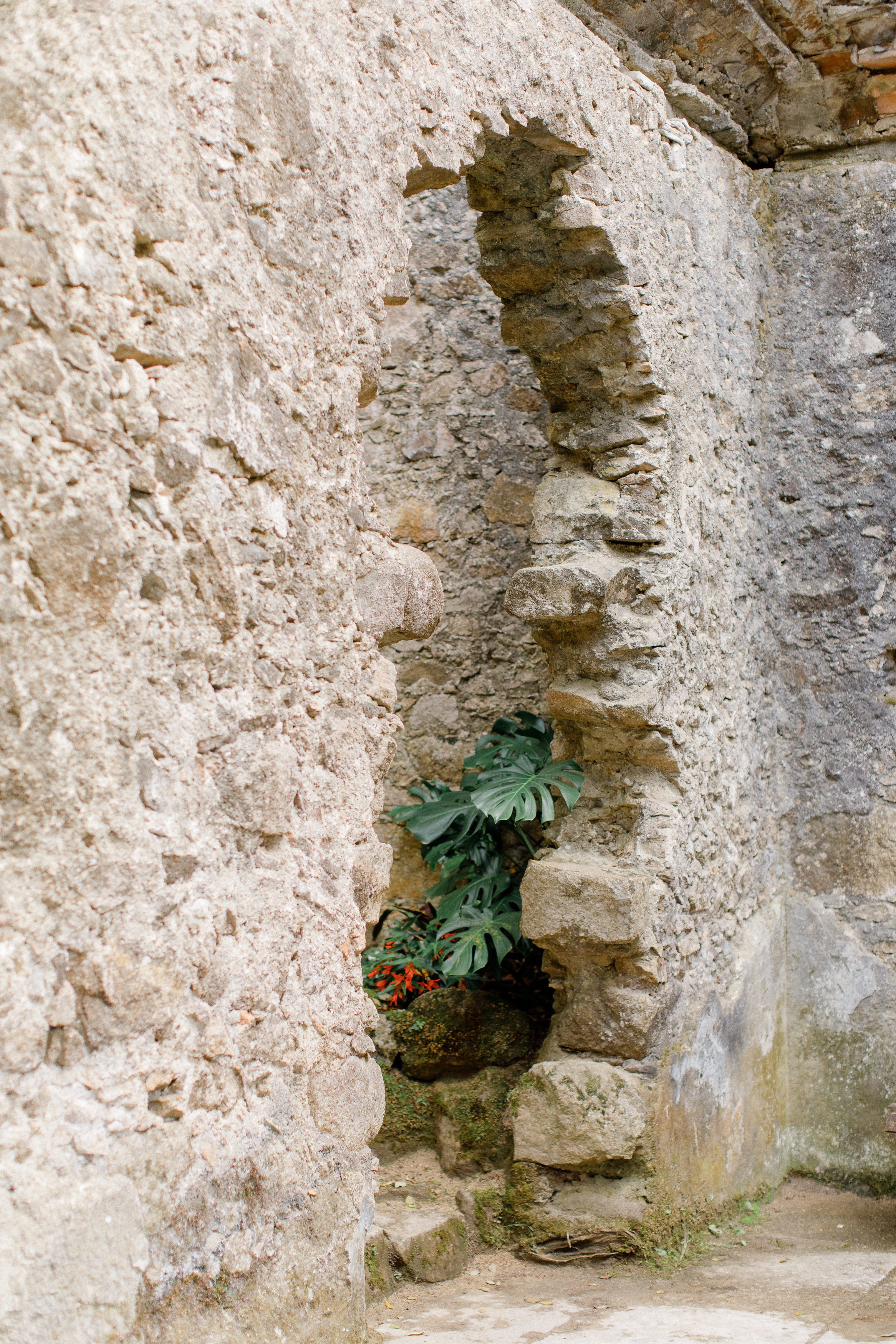
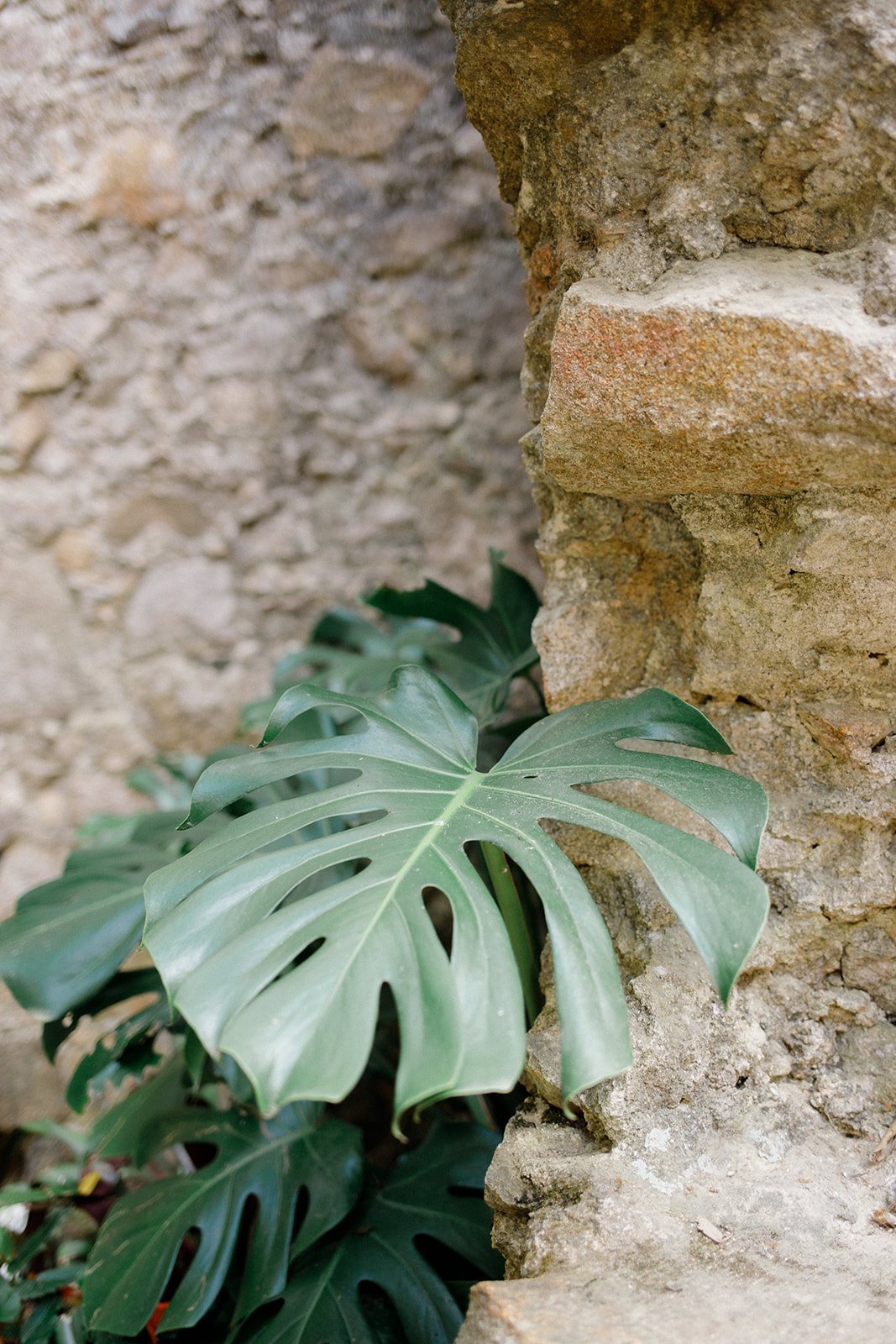
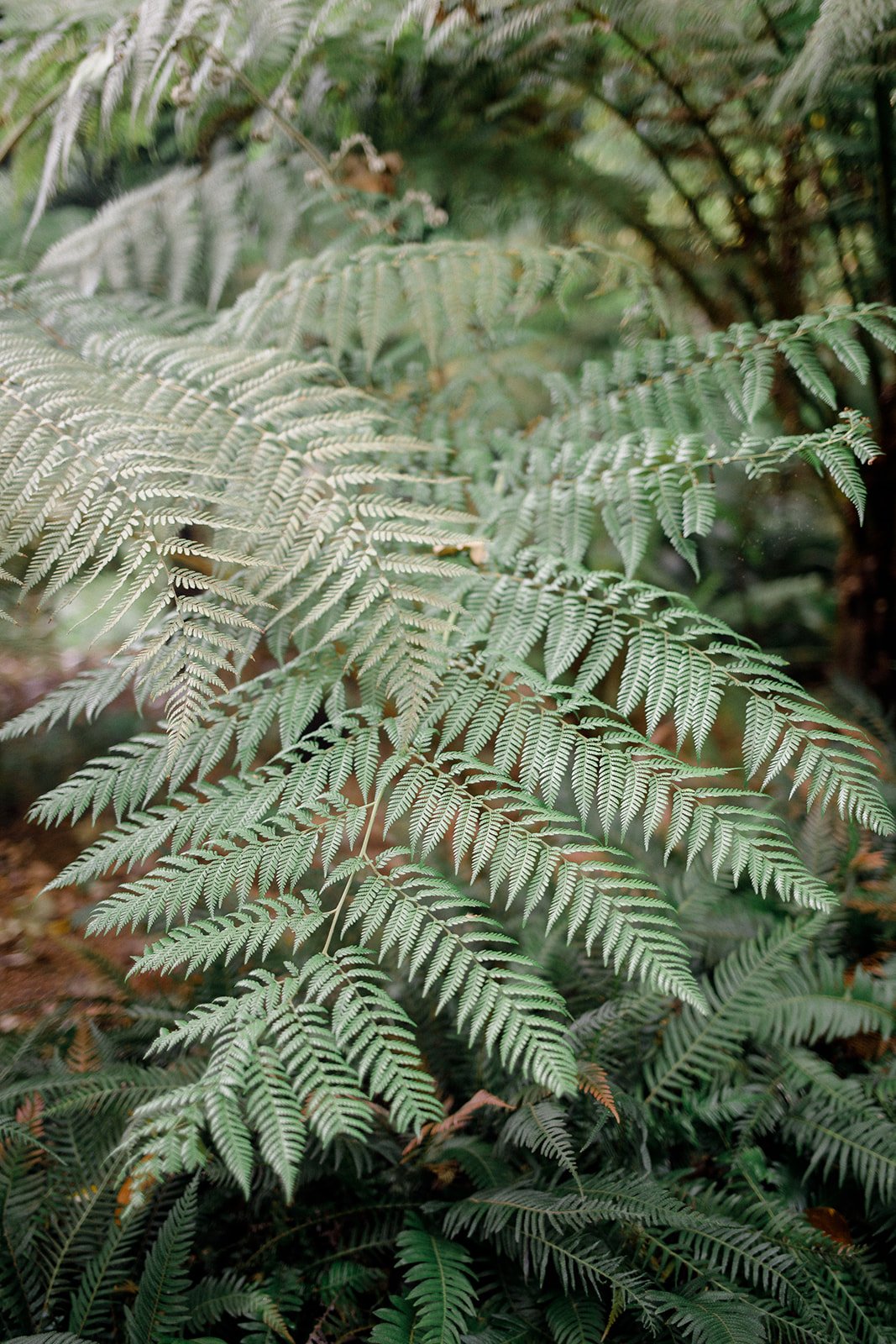
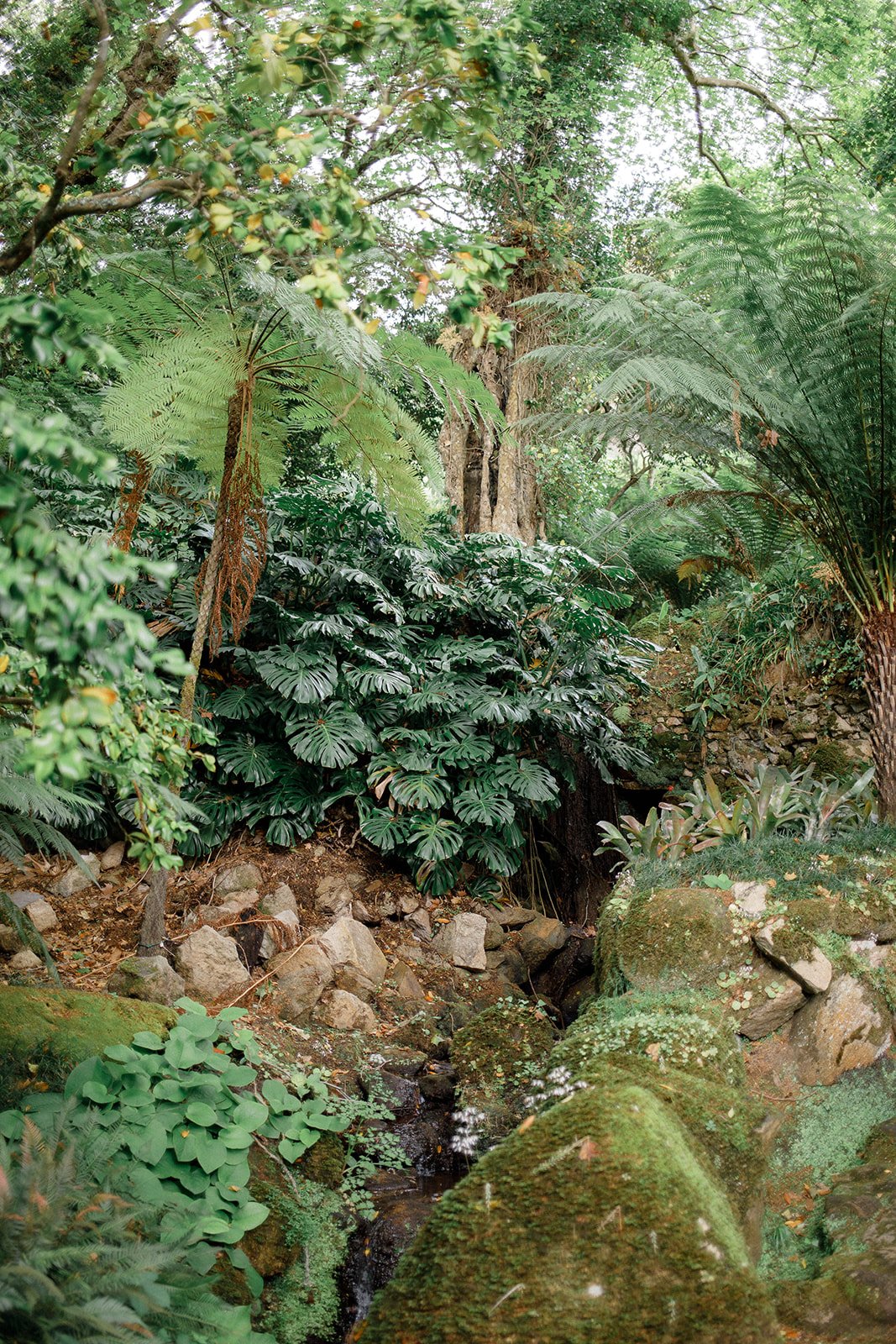
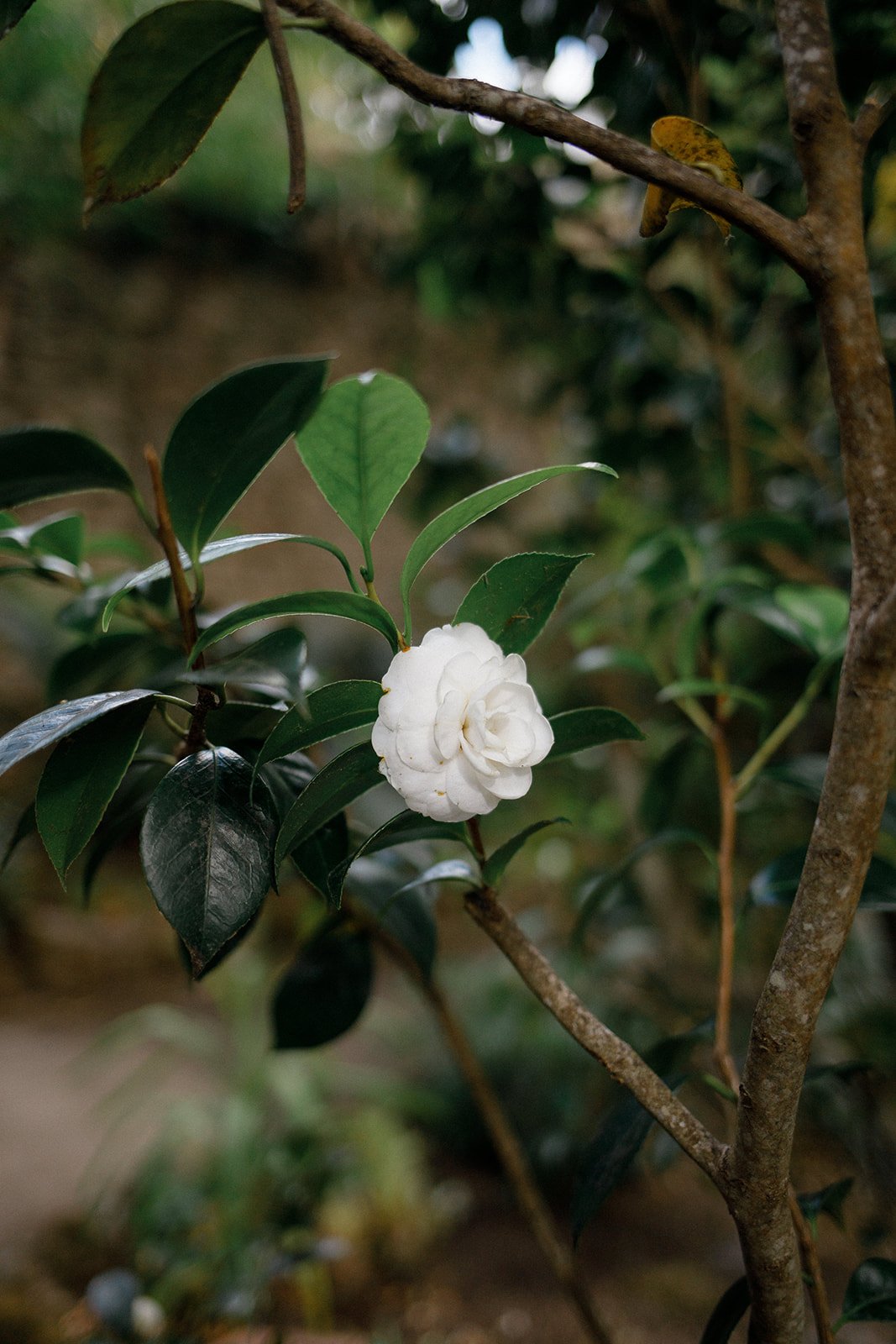
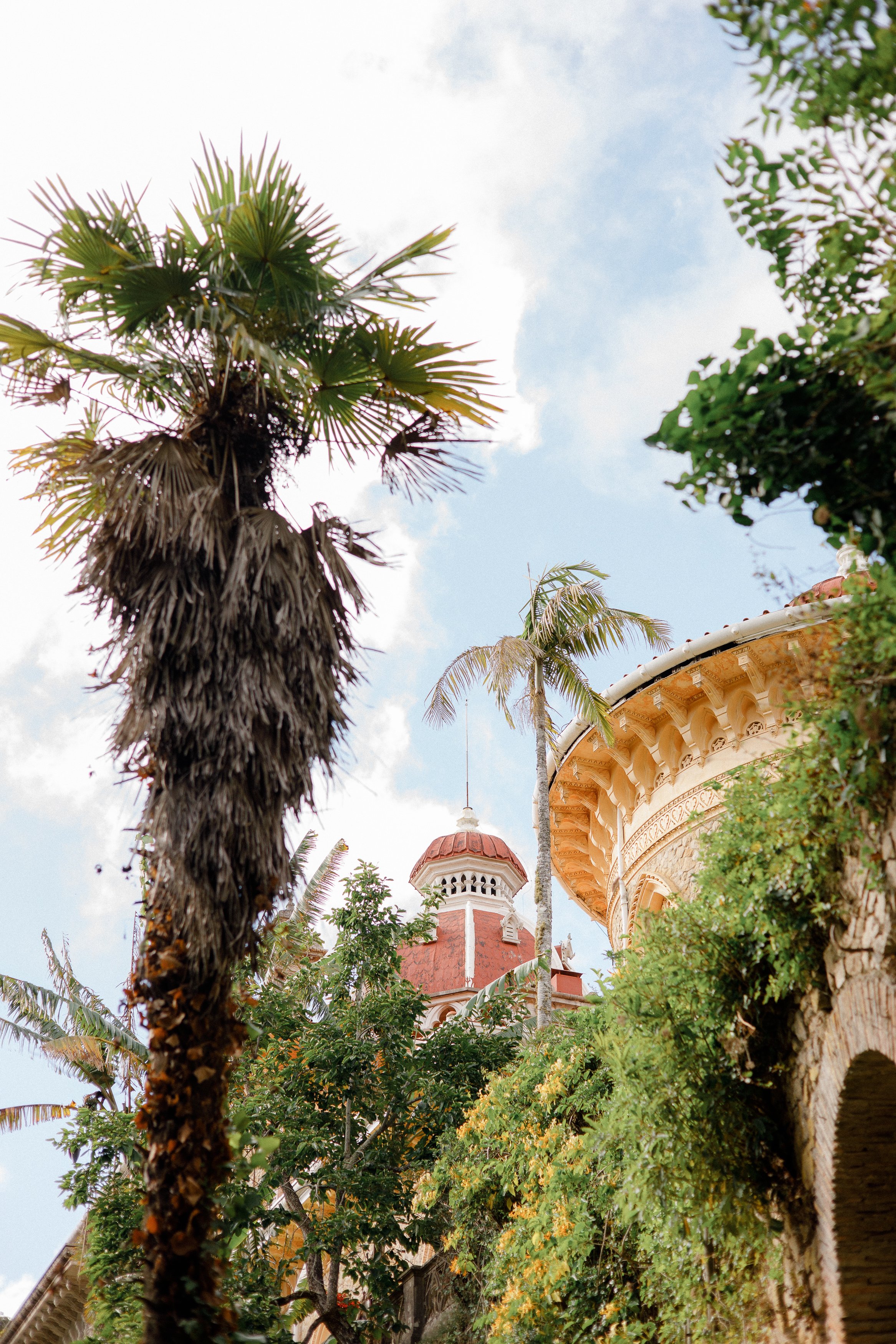
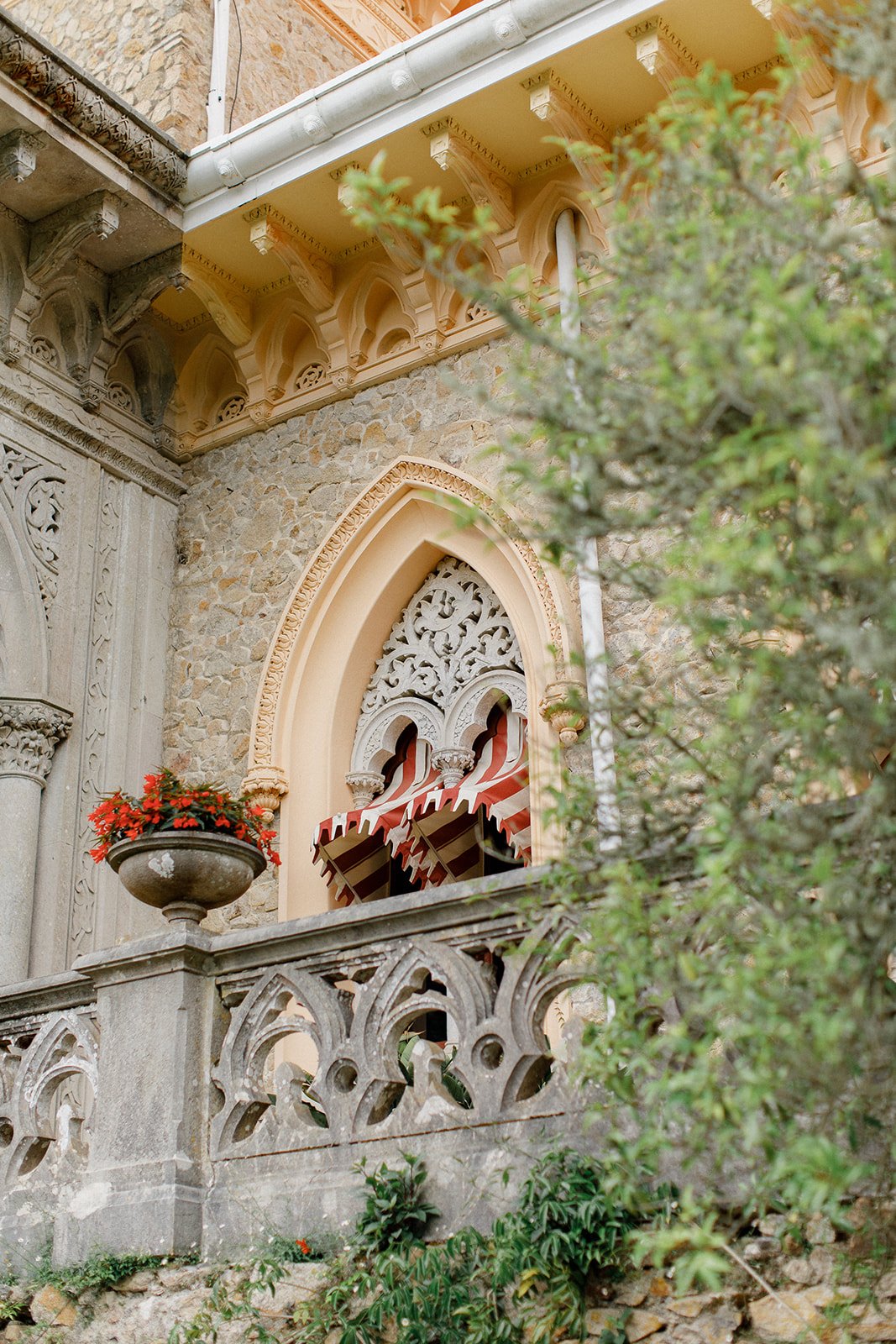
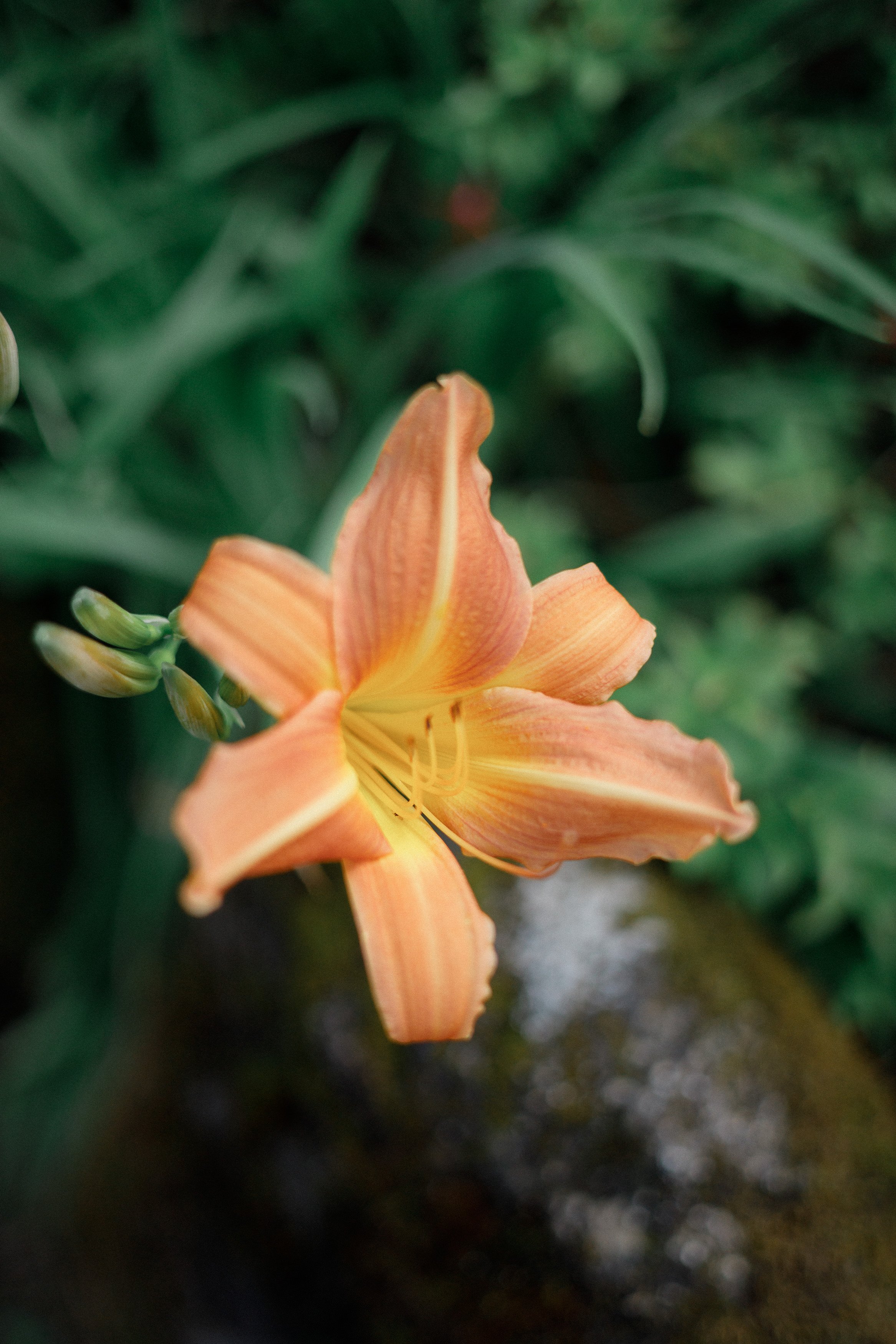
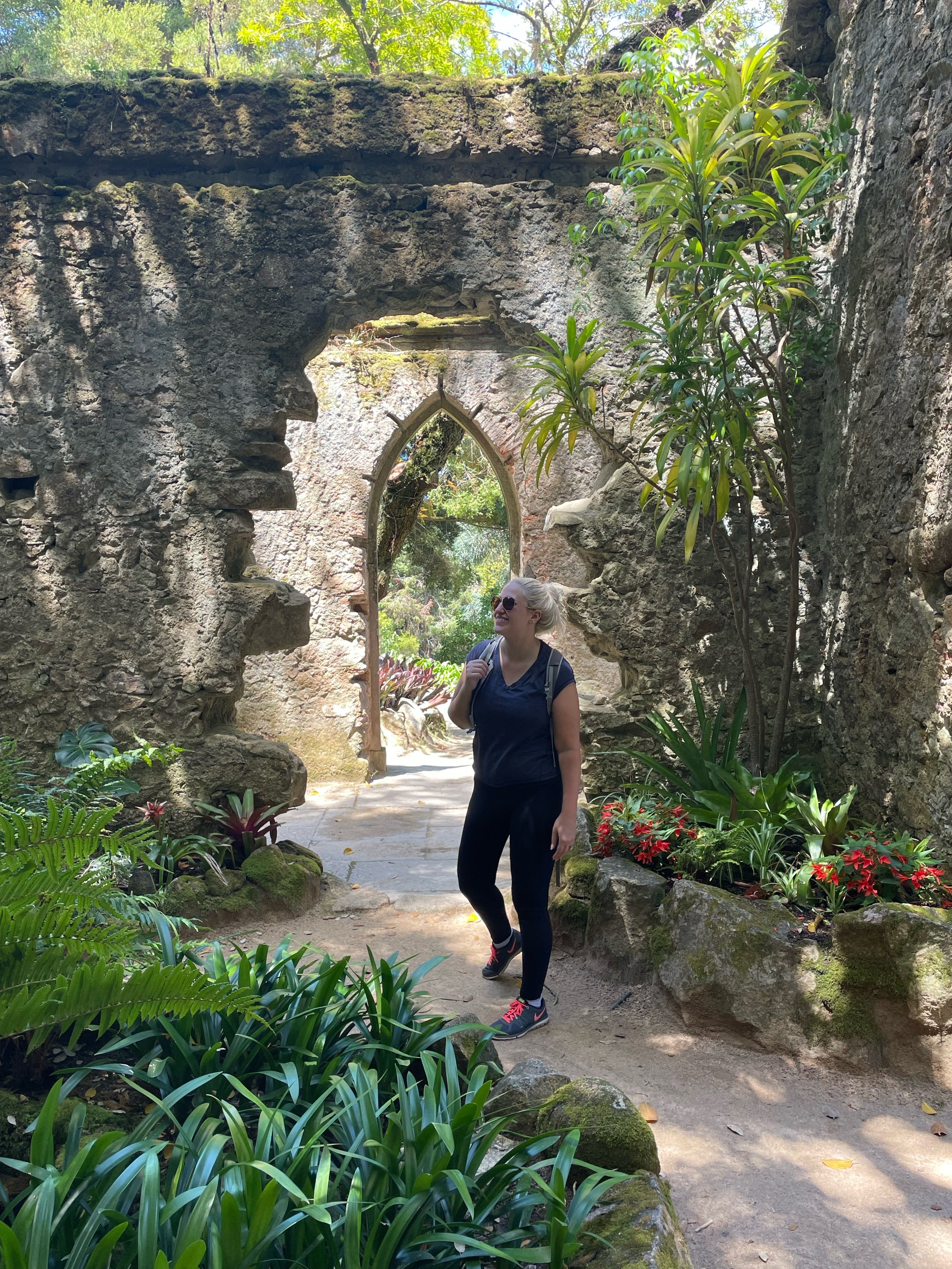
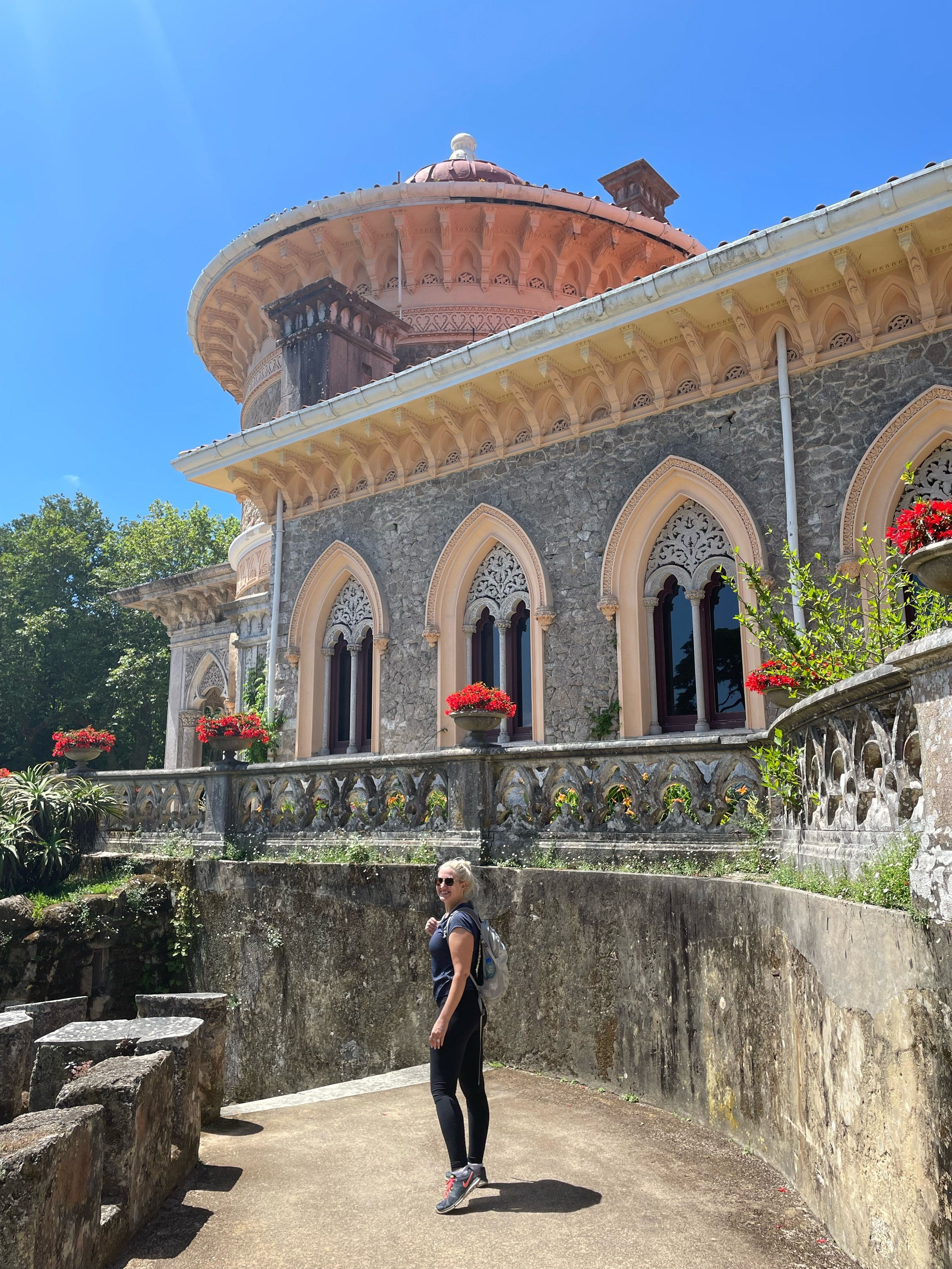
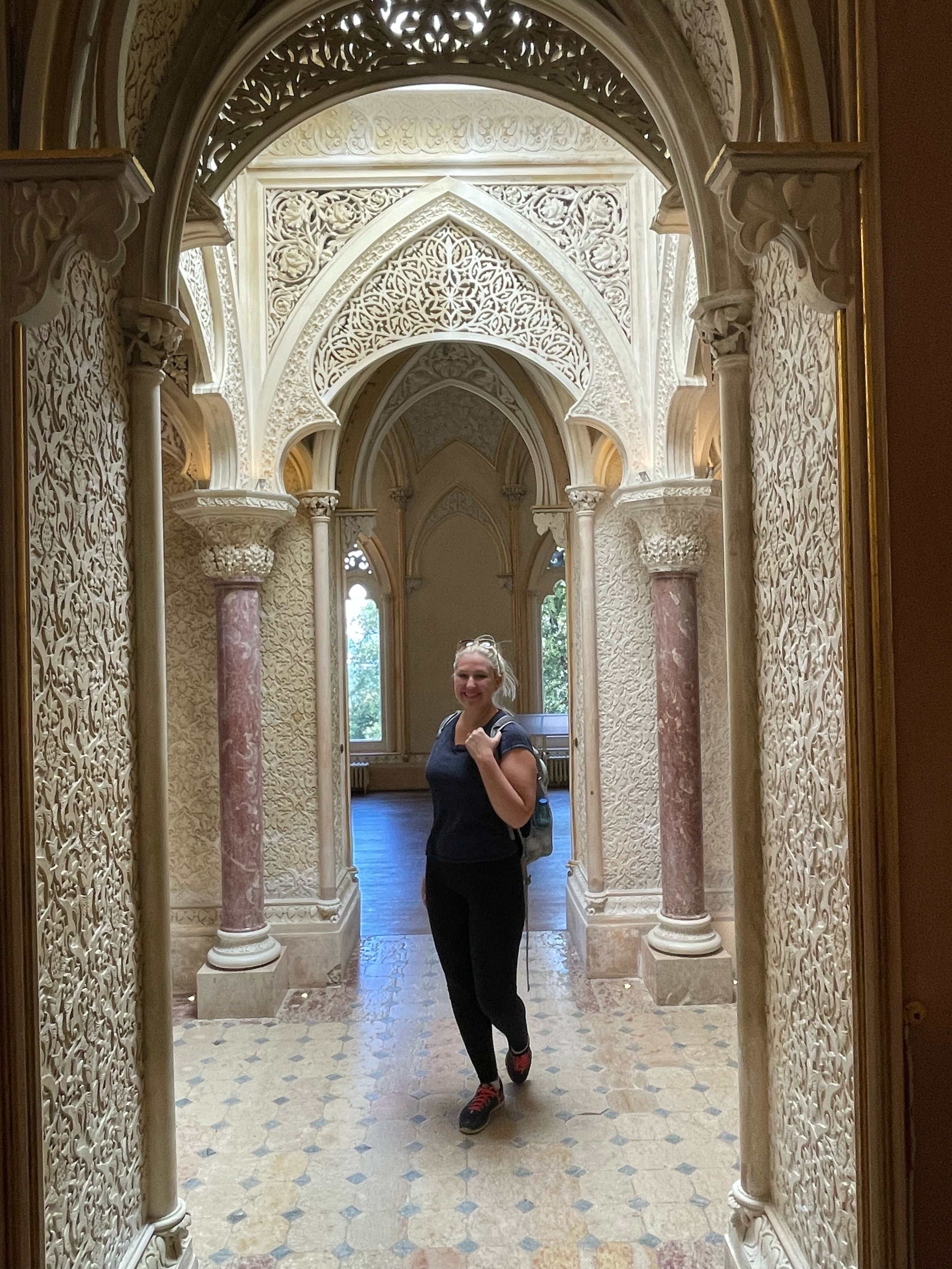

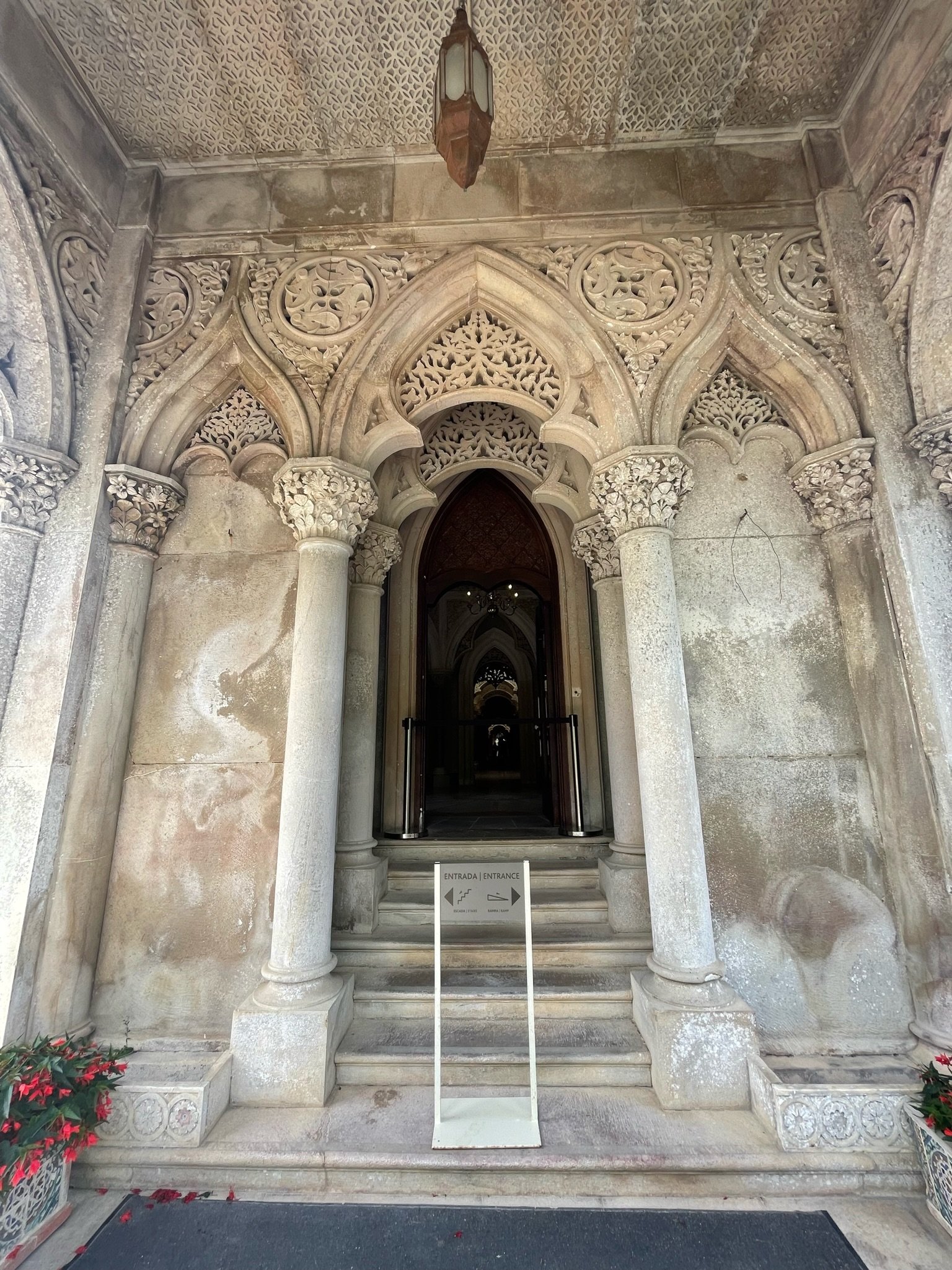
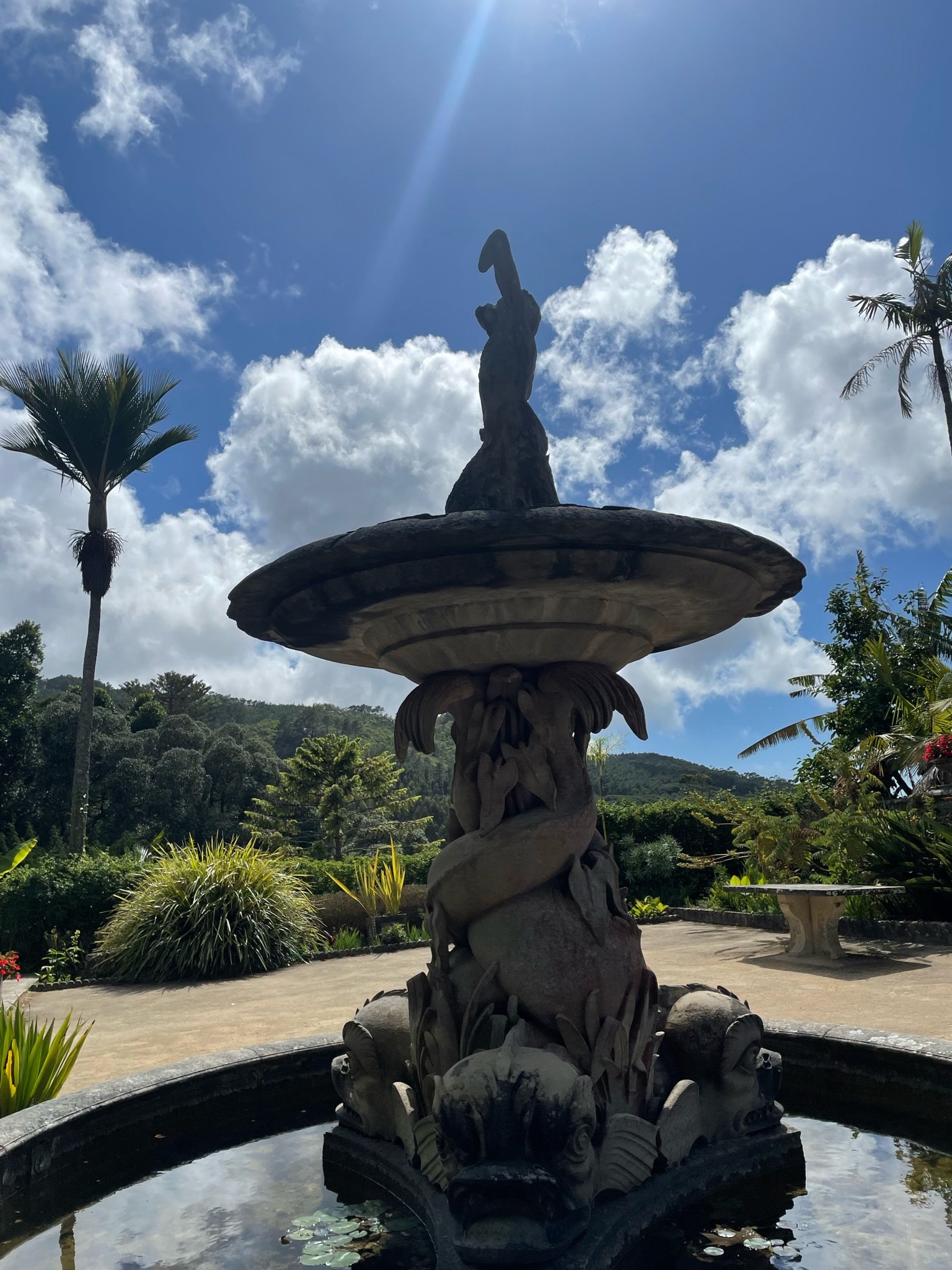
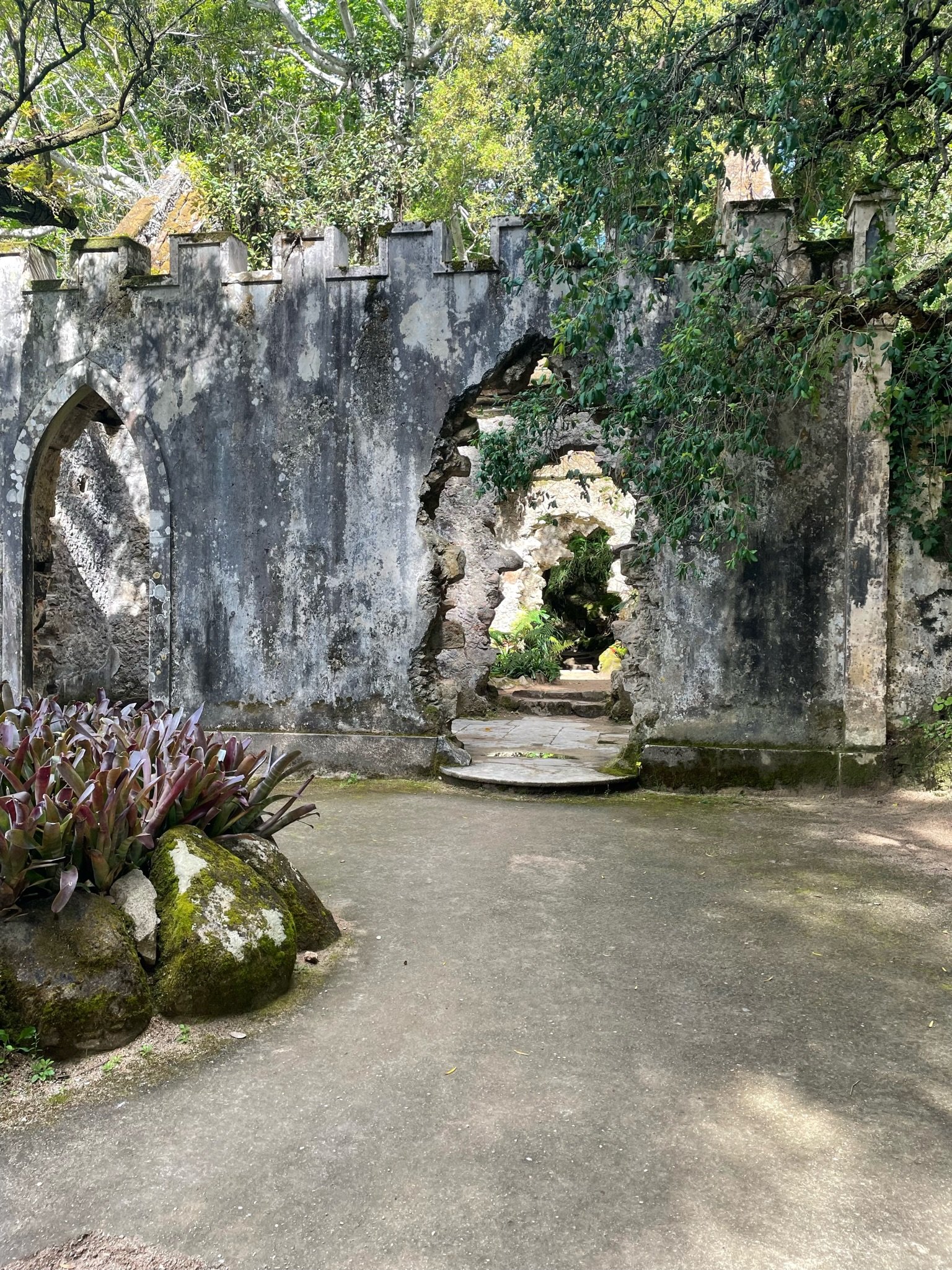

10. Admire eclectic Sintra Romanticism architecture at Monserrate Palace.
One of my favorite spots in all of Sintra was Monserrate Palace. (It should be one of my favorites because it was where I got married!)
Legend says that the villa lies where an old chapel used to sit within the Lunae Mons (Mountains of the Moon). It’s said that the area symbolizes a mythological hiding place for the goddess of the hunt, nature, and the moon - Diana. In Roman times, she was known as Cynthia, which has come to be known as present-day “Sintra”. I love the mysticism associated with this destination - it really does feel like you’ve entered into a fairy tale enchanted forest!
The villa lies inside of a large park with a lake, several springs and fountains, grottoes, and lush greenery. Within this forestry, lies some chapel ruins. It was left in ruins by the 1755 Great Lisbon Earthquake, which in my opinion made the site even more enchanting. The ruins are literally a part of the surrounding nature with plans and roots growing in and around the structure.


























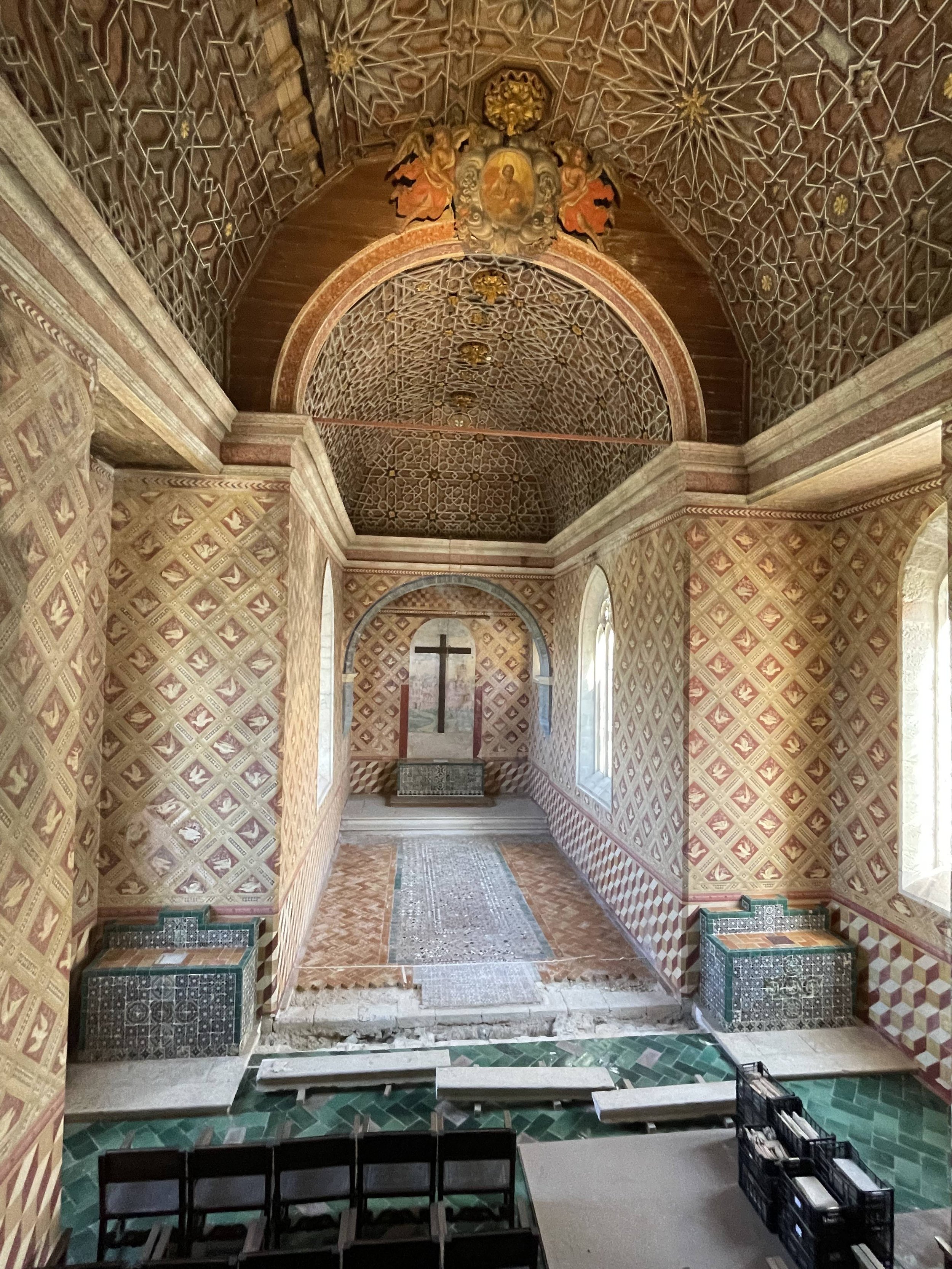










11. Visit the best preserved medieval royal residence in Portugal - Sintra National Palace (Palácio Nacional de Sintra).
This UNESCO World Heritage Site was once a castle that was turned into a palace, with much of the palace dating back to King John I around 1415.
Upon touring, you can explore the Arab Room (a tiled room with a Moorish fountain in the center), the large kitchens with conical chimneys, the impressive domed Coat of Arms Room, and The Swan Room with swan paintings on the ceiling, among others.
The details preserved inside this palace are truly amazing.
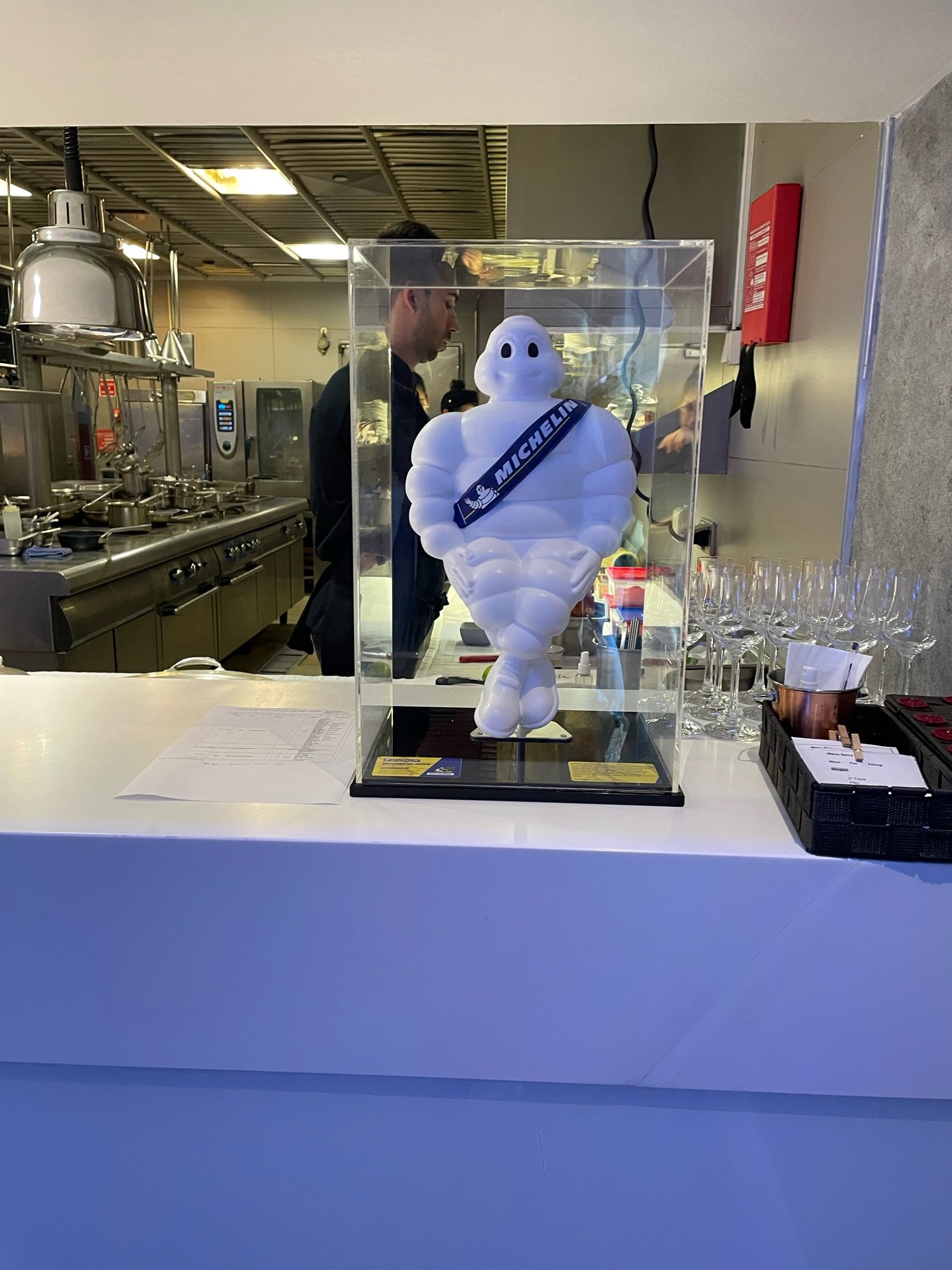


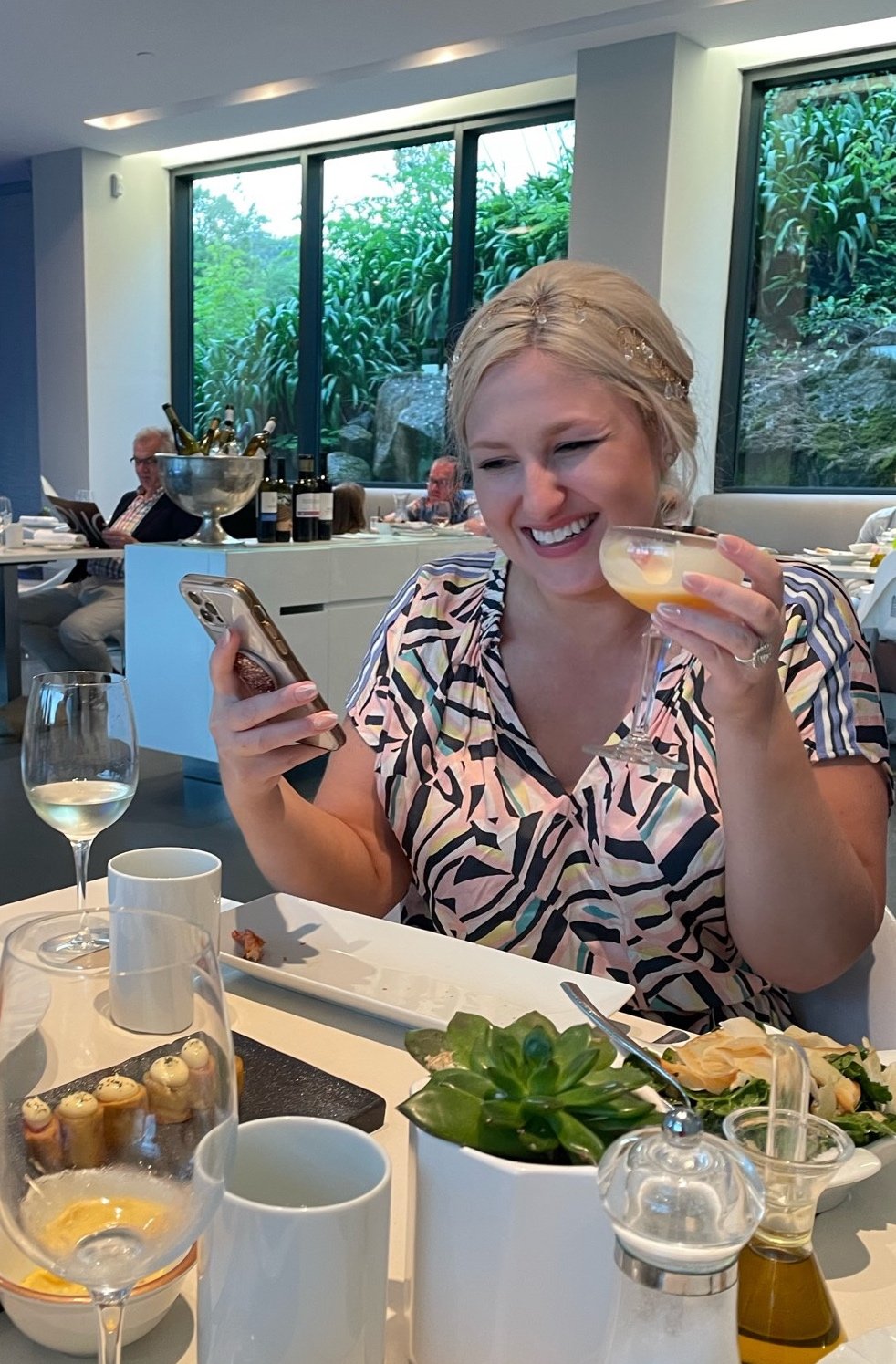






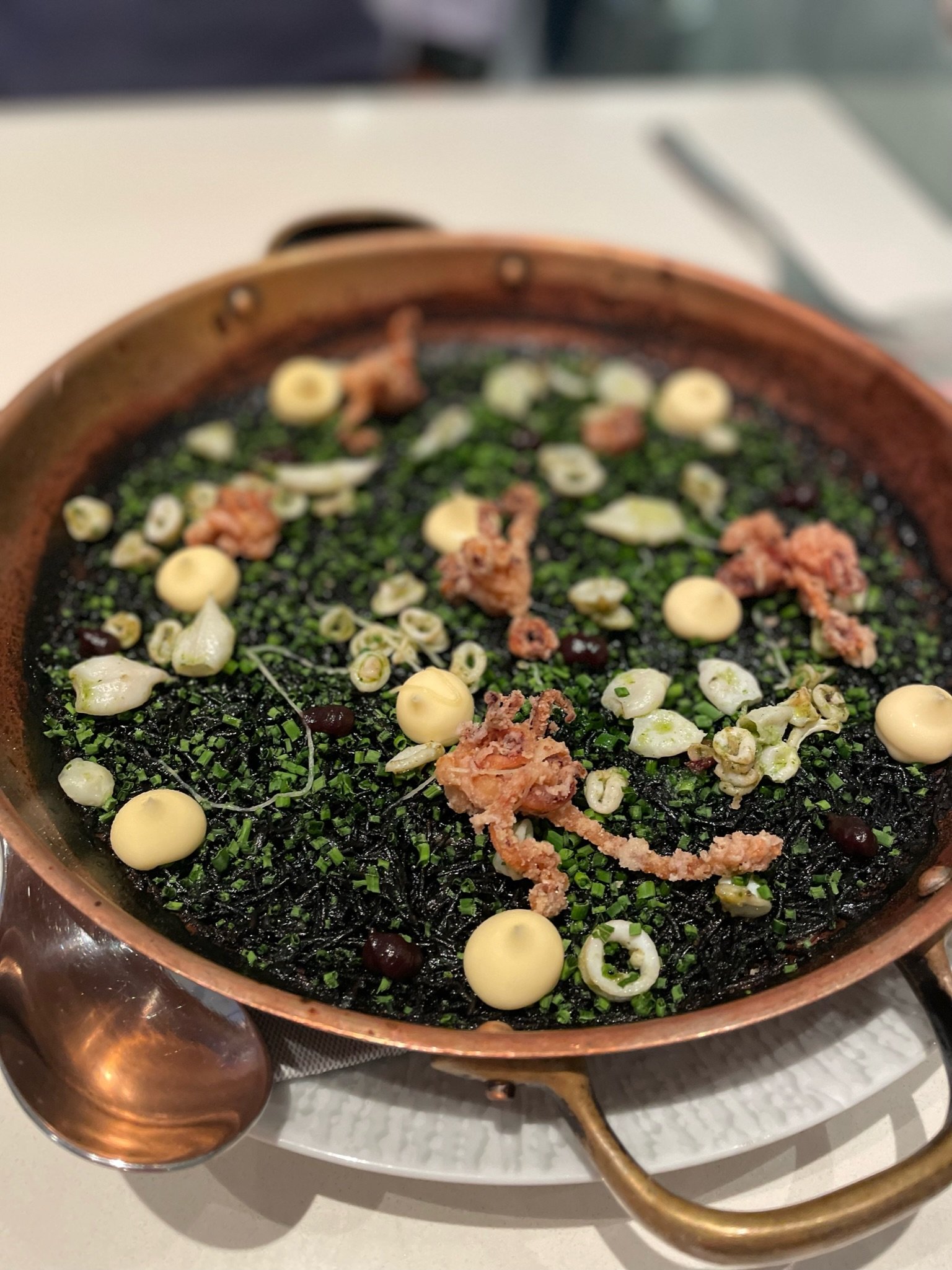

12. Experience the finest Portuguese dining at a Michelin-star restaurant.
Arola menu features creative and contemporary twists on Portuguese cuisine. His approach to Mediterranean tapas is delicious. I opted for the prix fixe menu.
We started with a delicious tropical passion fruit mango martini drink. Next was a simple, but good bruschetta type of dish.
One of the highlights was what came next - a coconut shrimp with curry sauce. It was absolutely incredible. Next was burrata (which I adore!) followed by some sort of savory tart bite.
For our mains, we had a fresh tossed salad with traditional squid risotto. The dark color was a bit intimidating but it was still good.
Finally, our dessert was this fluffy tropical ice cream - there was ice cream in the center but it was surrounded by wispy froth. SO GOOD!!





13. Learn about and taste authentic Port wine at Bar do Binho.
Port is a sweet, red, fortified wine from Portugal. It’s generally enjoyed as a dessert wine because of its sweetness.
Though the tastings are pricey, you can’t beat the view. The tasting includes four different ports, all aged at different time periods. Learn about the port wine making process from your server while enjoying a taste of Portuguese culture.
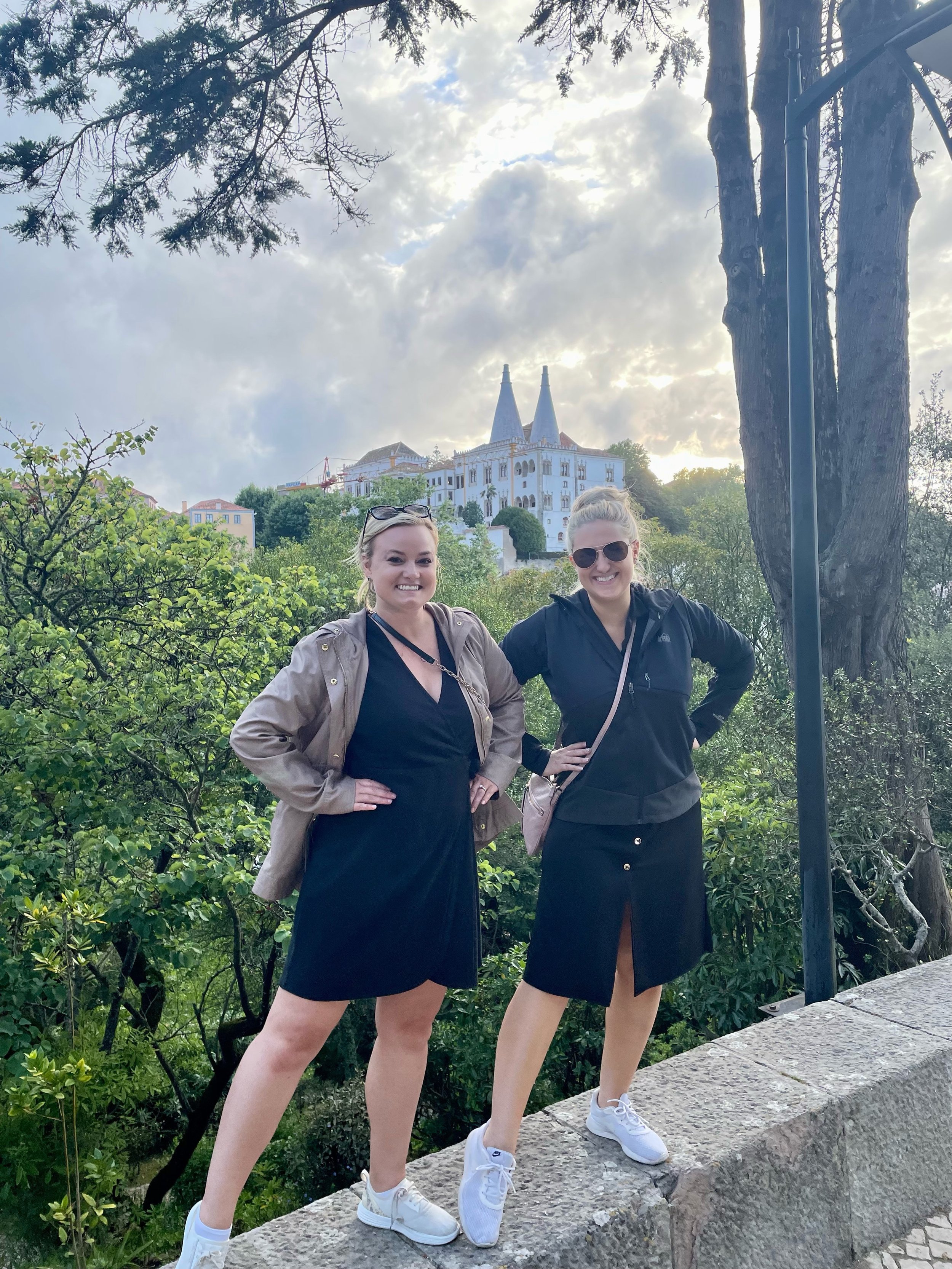
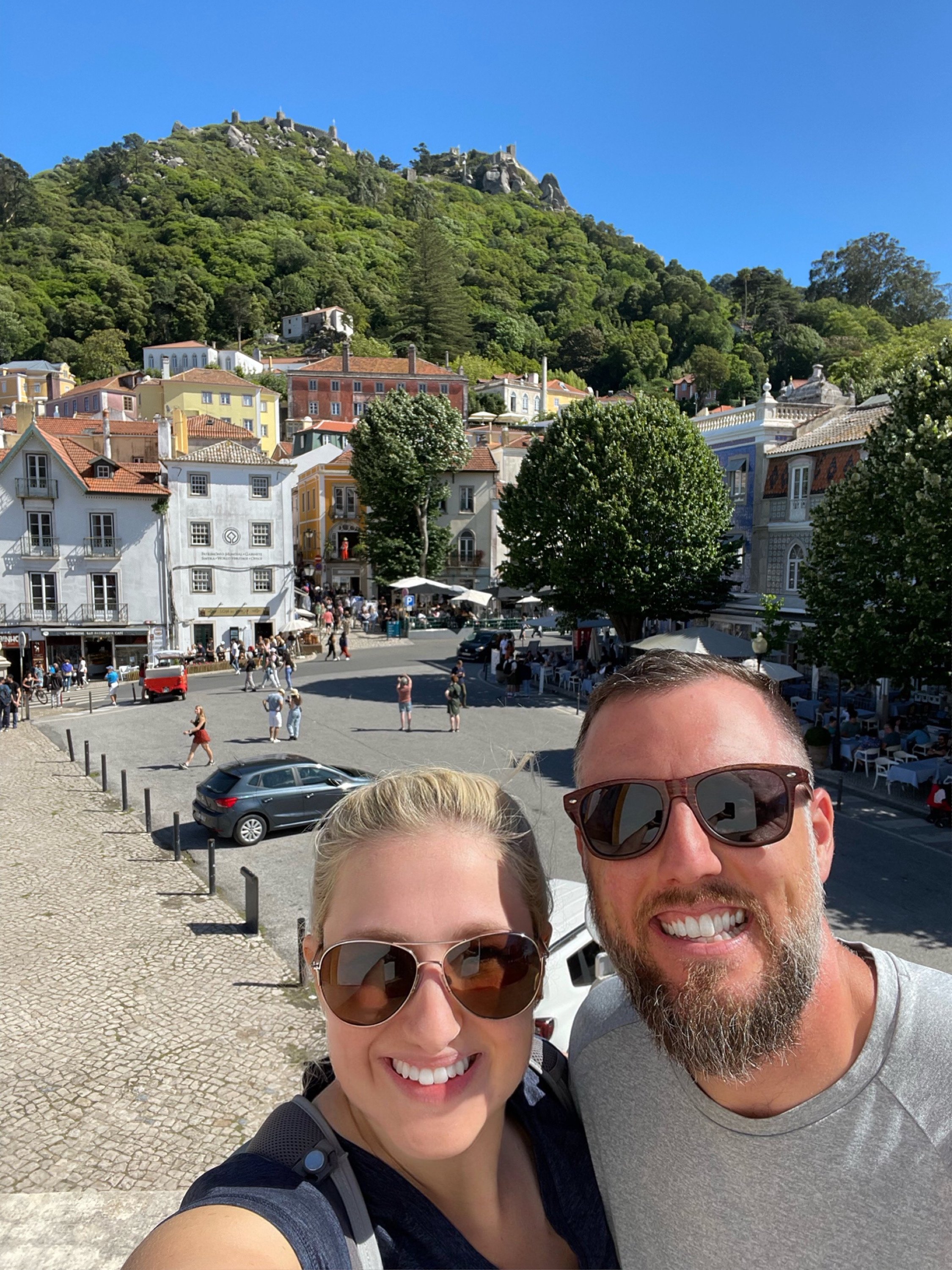









14. Explore Sintra Old Town in the city center.


























15. Spend a night inside a palace at Palácio de Seteais.
This romantic palace features period architecture that showcases the elegance and aura of the 17th century. Rooms contain ornate furnishings while common rooms and ballrooms highlight stunning tapestries and frescoes. Upon check in to your room, you’re greeted with port and quintessential Sintra sweets.
Before checking out, enjoy a peaceful, luxury breakfast. For breakfast, there is a large indulgent display of buffet items including yogurt, fruit, fresh honeycomb, lox, local breads, pastries, cheeses, and more. Hot items, including egg dishes, can be made-to-order in any style. It’s simply delightful dining in this room and the food was lovely.



16. Spot rogue peacocks at Casa Holstein.
Peacocks seem to be commonplace in Sintra and other parts of Portugal. While in Sintra, we saw or heard at least one peacock daily.
Quinta Sao Sebastiao is conveniently located in Sintra, just 700 meters from Quinta da Regaleira in the city center. The main house is a beautiful pastel pistachio hue - this house is private and inaccessible by guests. It was built by the father of the 2nd Duchess of Palmella (1827-1861), the first Count of Pova (1744-1833), the present owner’s ancestry. The majority of the 13 guest rooms are located just next to the house and are decorated with antiques. There’s a swimming pool onsite as well as a yoga studio.
BONUS!
- Cabo da Roca - natural coastal viewpoint with lighthouse built in 1772
- Palácio Nacional e Jardins de Queluz- 18th century palace in Queluz on the Portuguese Riviera
- Convento Dos Capuchos (Convent of the Capuchos)- historical convent consisting of small quarters and public spaces in São Pedro de Penaferrim
- Museu das Artes de Sintra- elegant museum exhibiting a range of Portuguese art, including paintings, sculptures, and photography
- Museu Anjos Teixeira- quaint museum with works by Portuguese father & son sculptors Artur Gaspar & Pedro Augusto Teixeira
- Praia Da Ursa- secluded beach with a steep trail, golden shores, and large rocks
- Praia Da Adraga- picturesque inlet with a shandy shoreline and rock formations
- Praia Das Maçãs- popular scenic beach with golden sands and clean sea waters
- Praia do Guincho- stunning beach with dramatic scenery, close to Cascais
Has this round-up helped you decide on what to do in Sintra? At the very least, I hope that it’s convinced you to stay in Sintra for longer than one day as there is so much to see and do in this fairy tale town! If you have something to add to this “Complete Guide of What To Do in Sintra”, please do share - I’d love to know! Drop them in the comments below.
author bio
Known as The Jet Set Blonde, Brittany Ryan inspires others to add more adventure to their childfree travel experiences. Brittany has visited 23 countries (and counting!) Connect with her to get access to detailed childfree travel itineraries, travel guides for weekend getaways, and updates on adult-only hotels, resorts, cruises, and other travel amenities.

